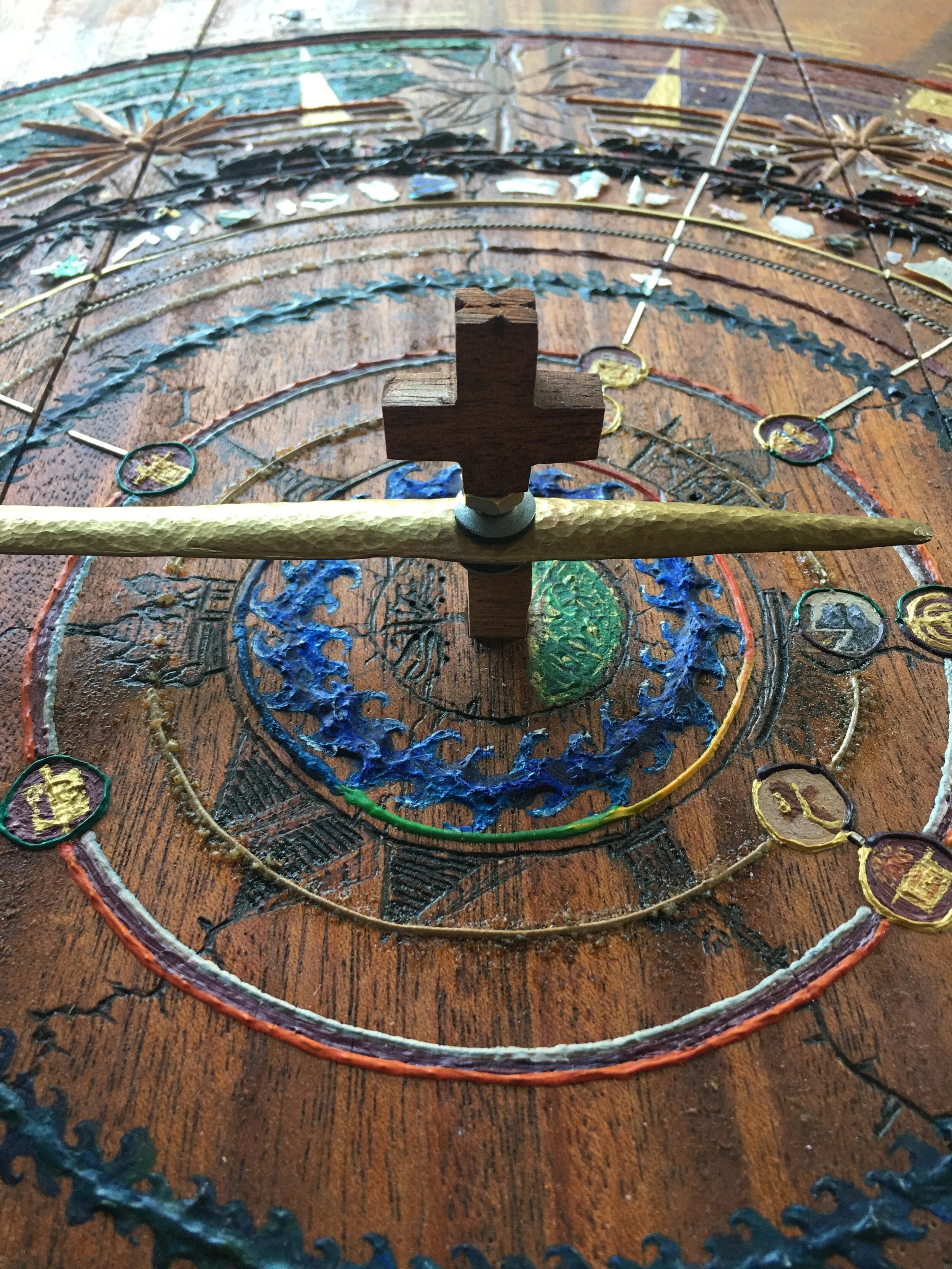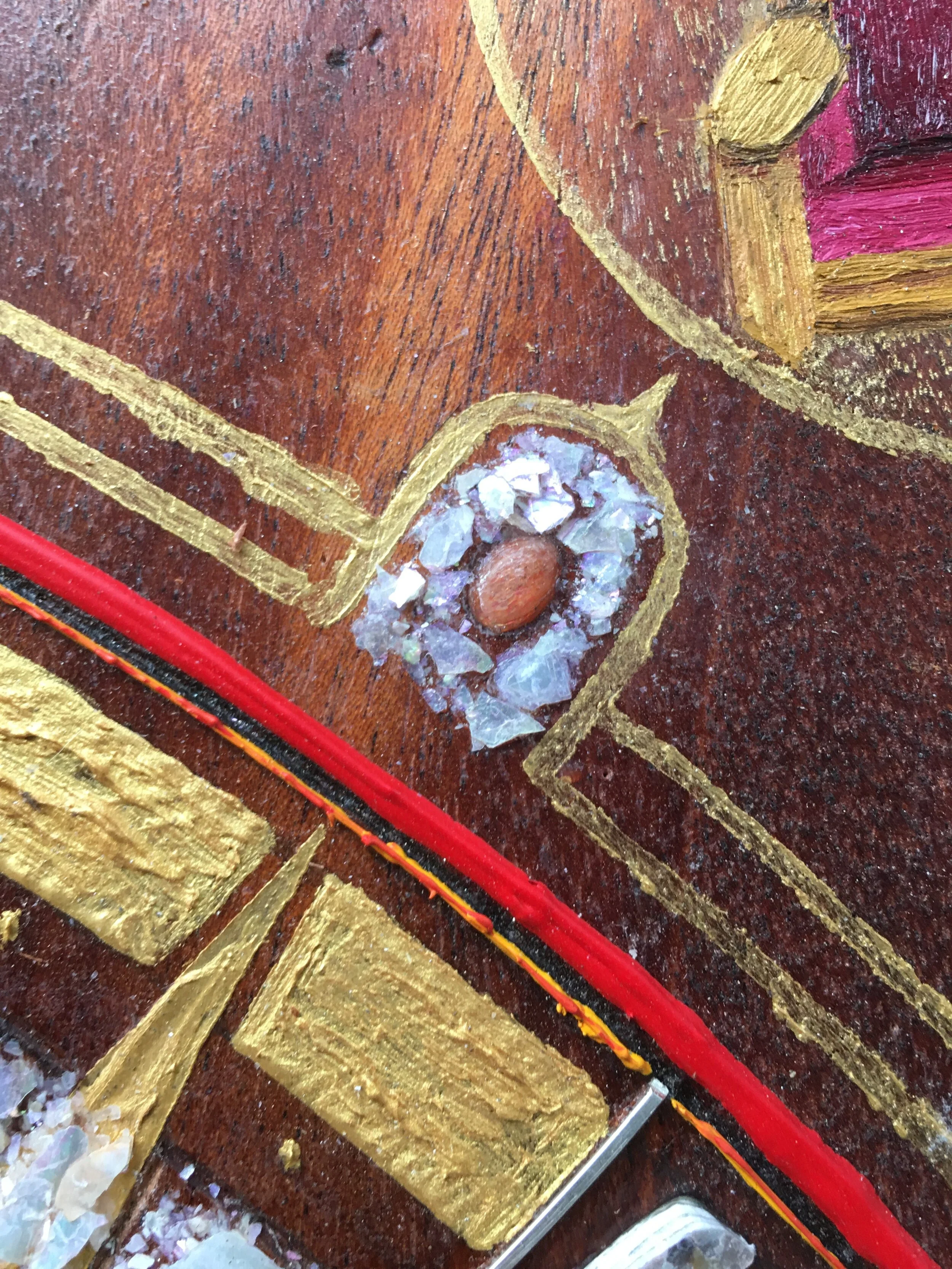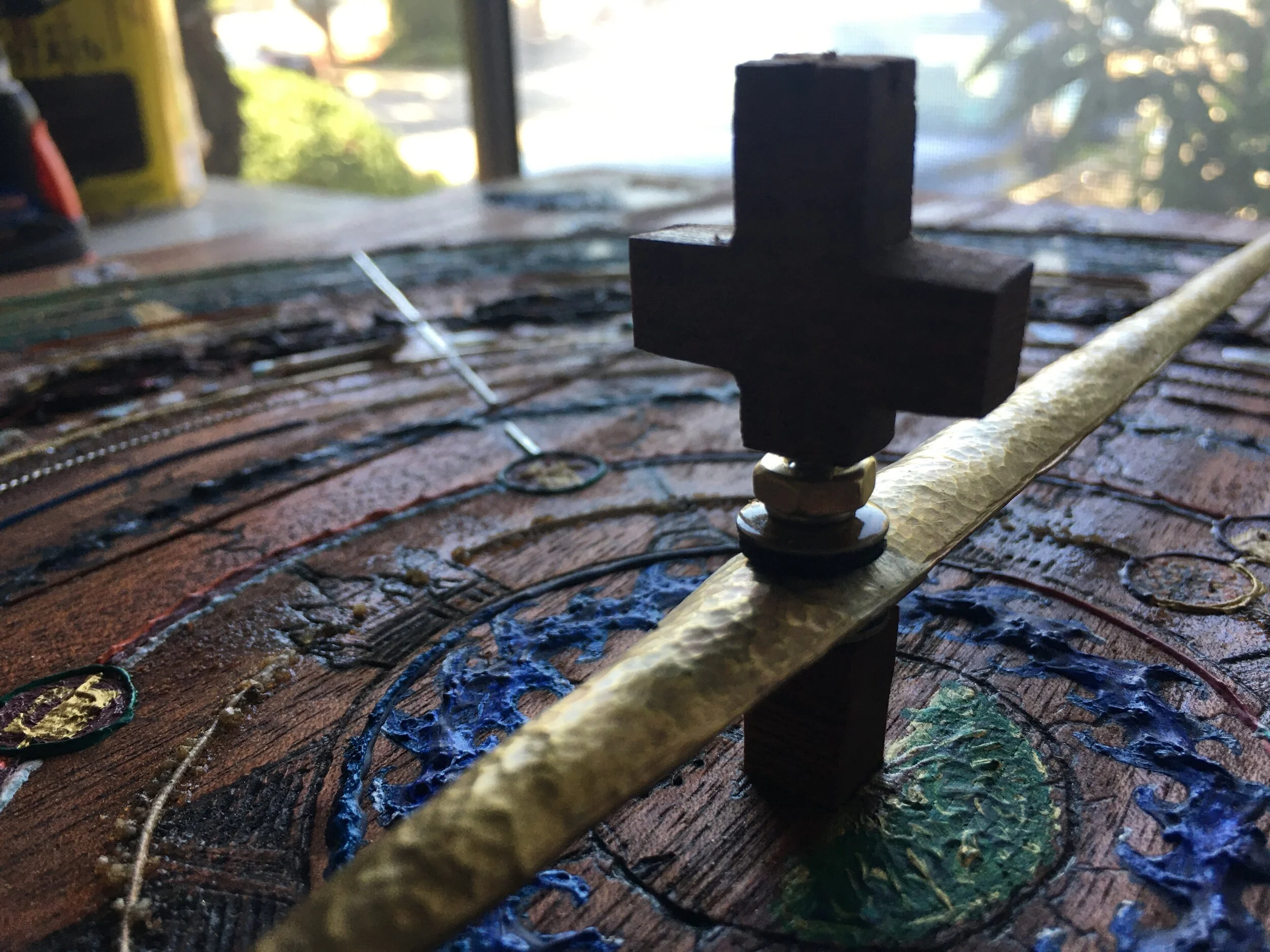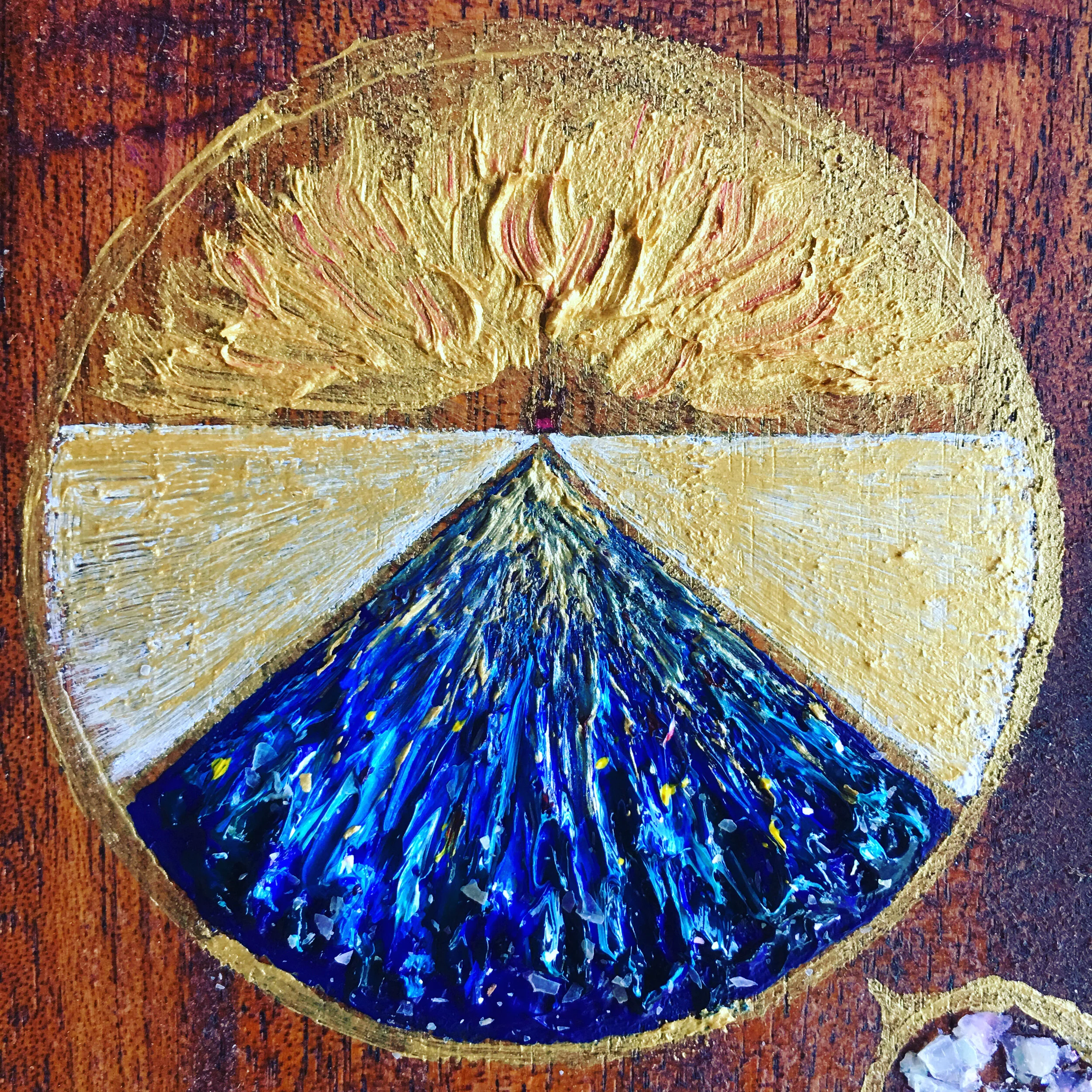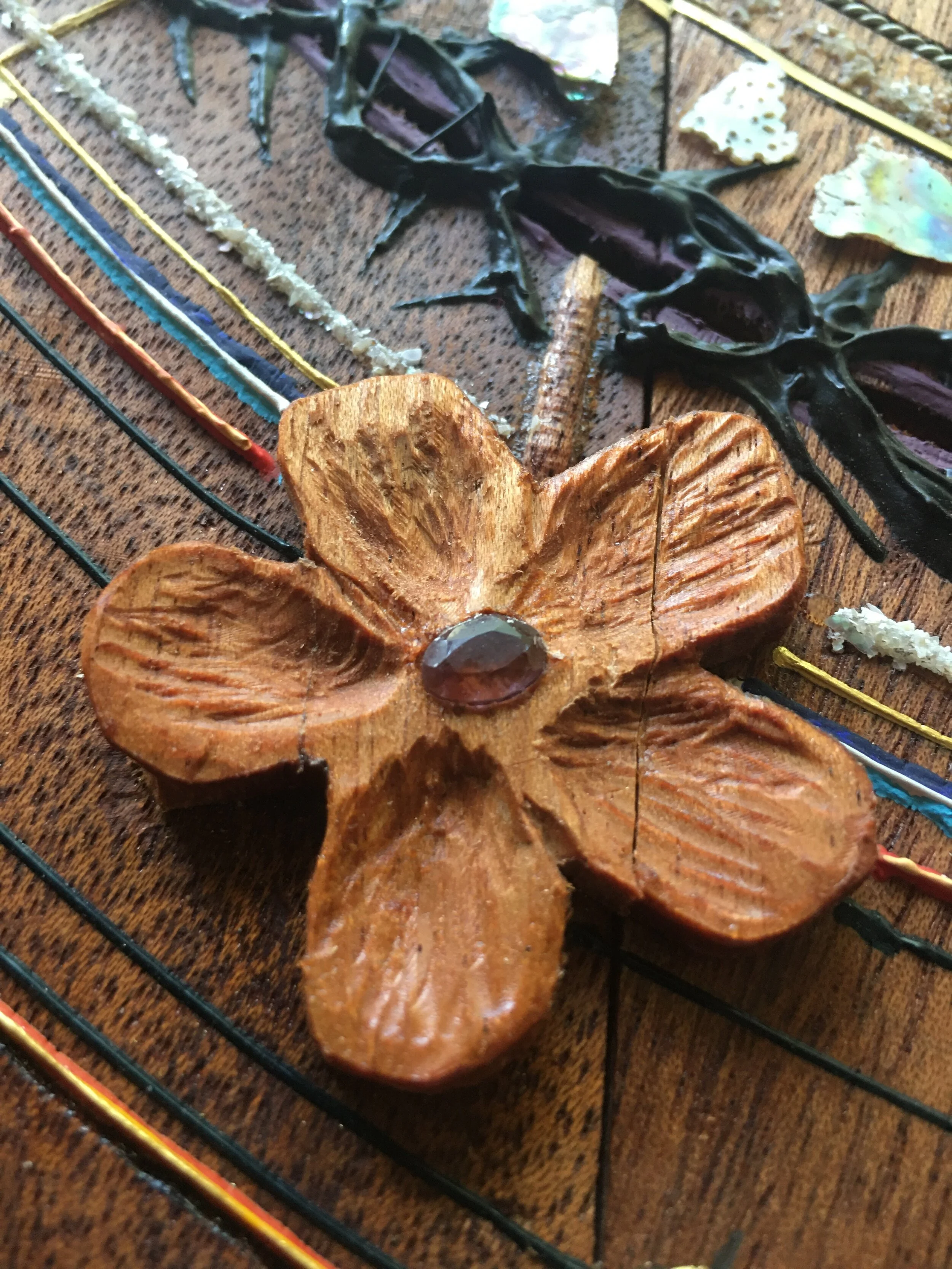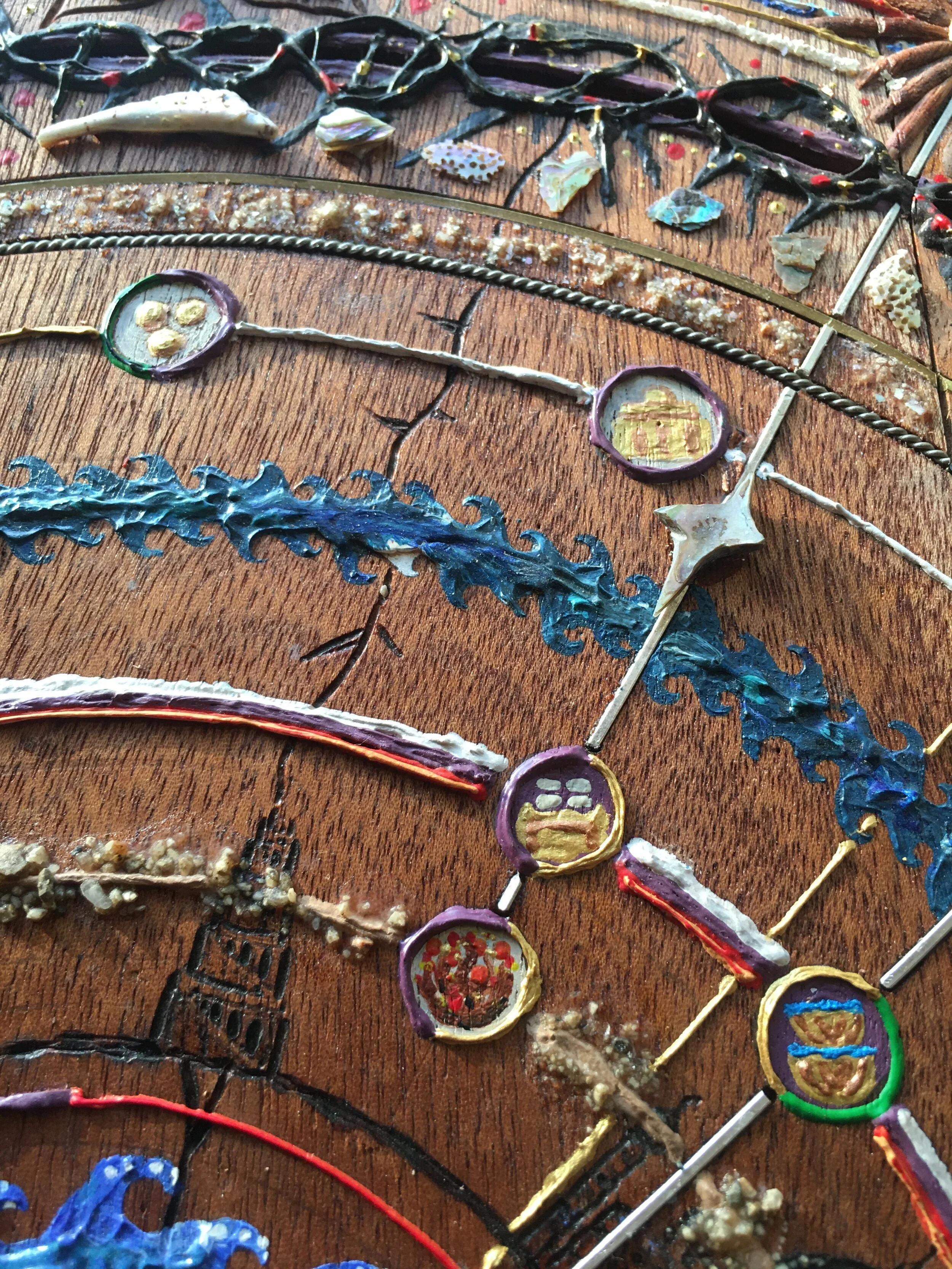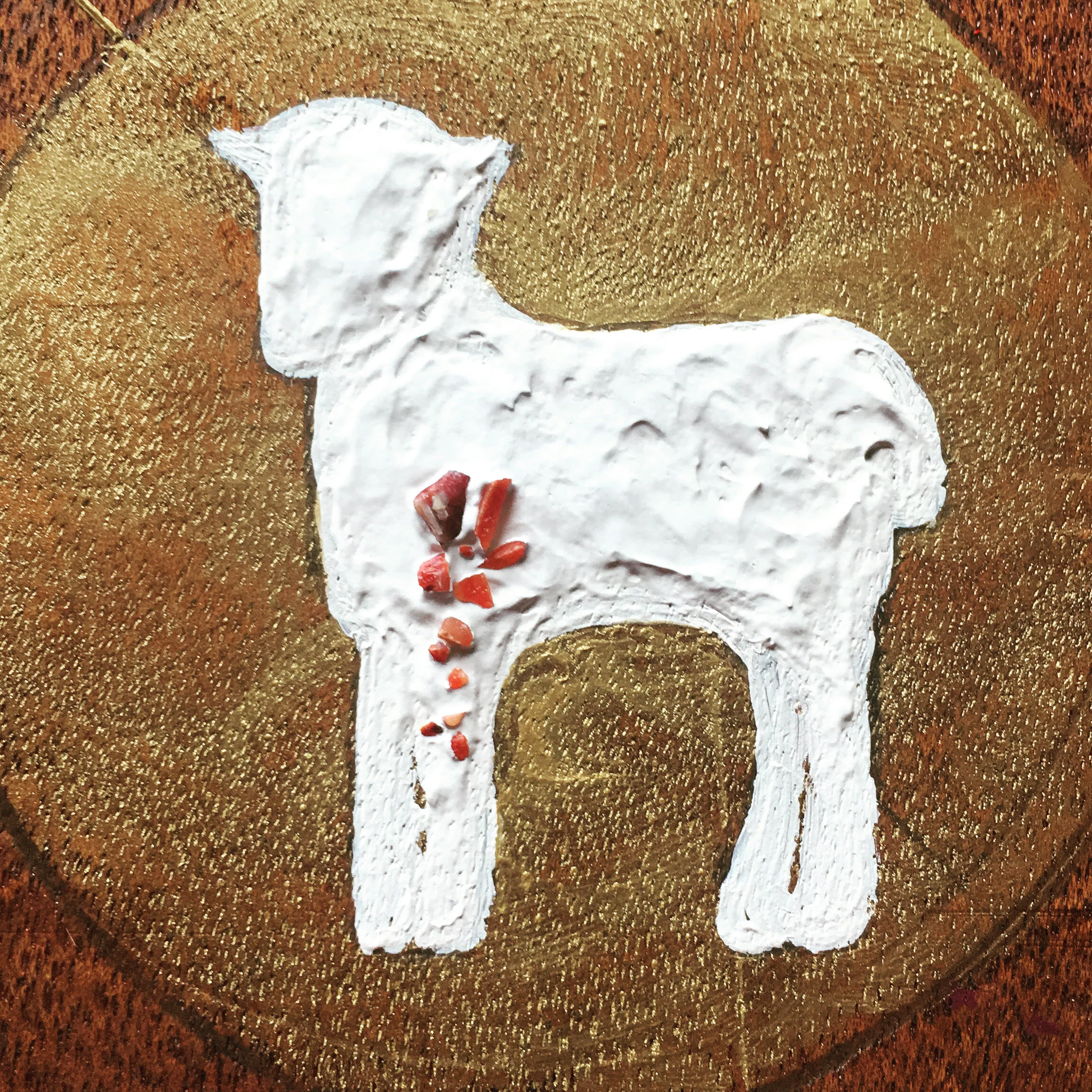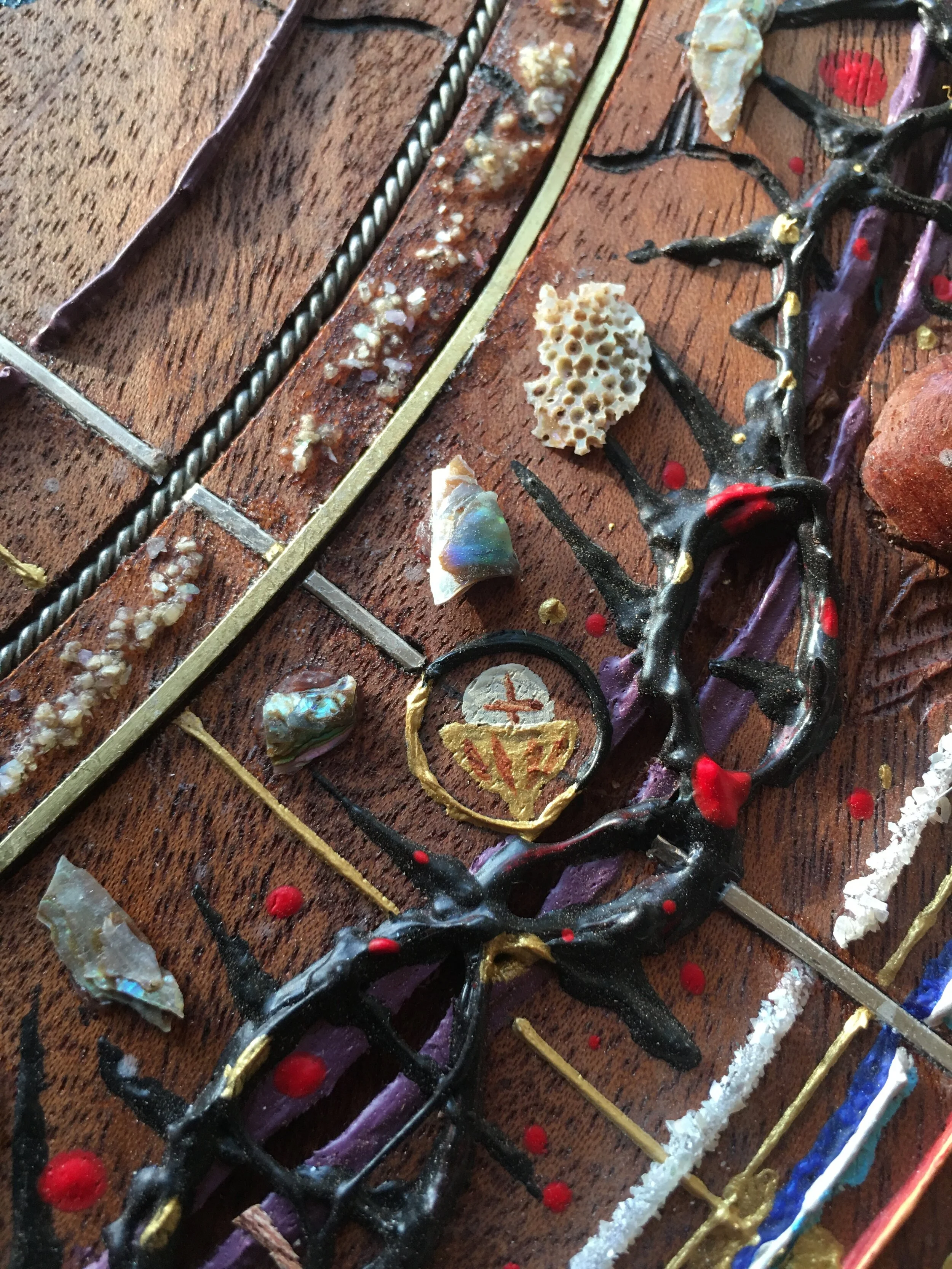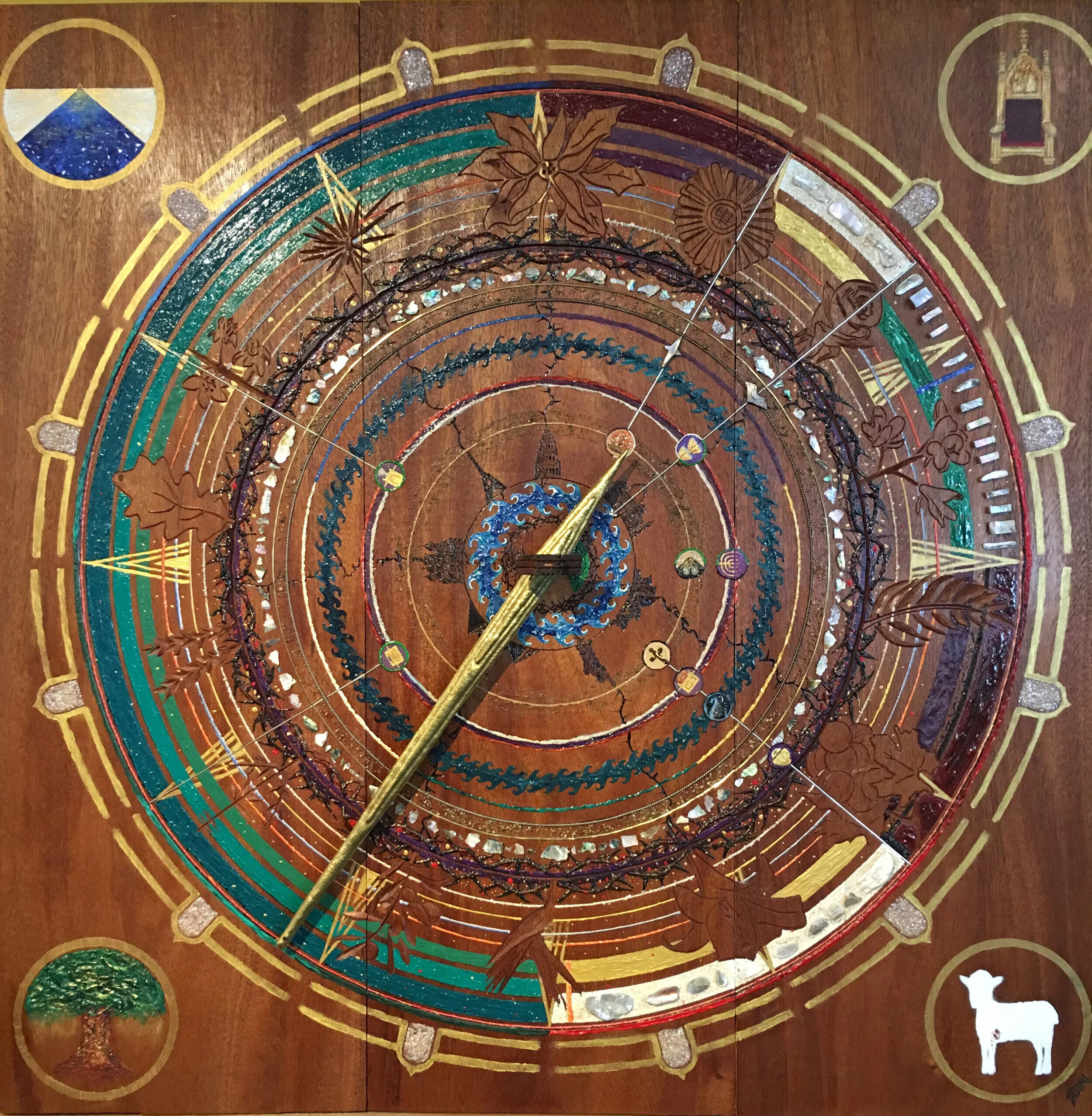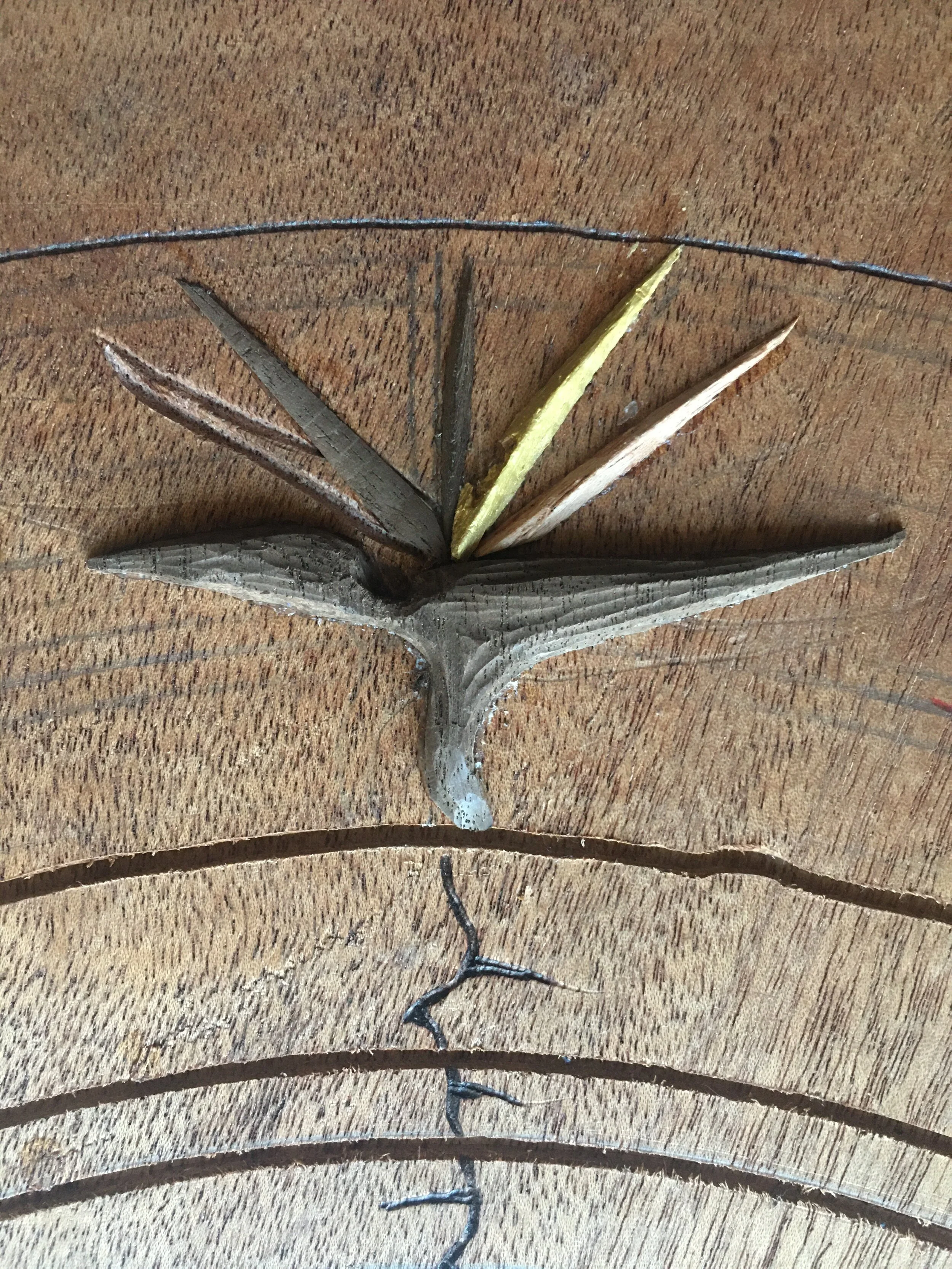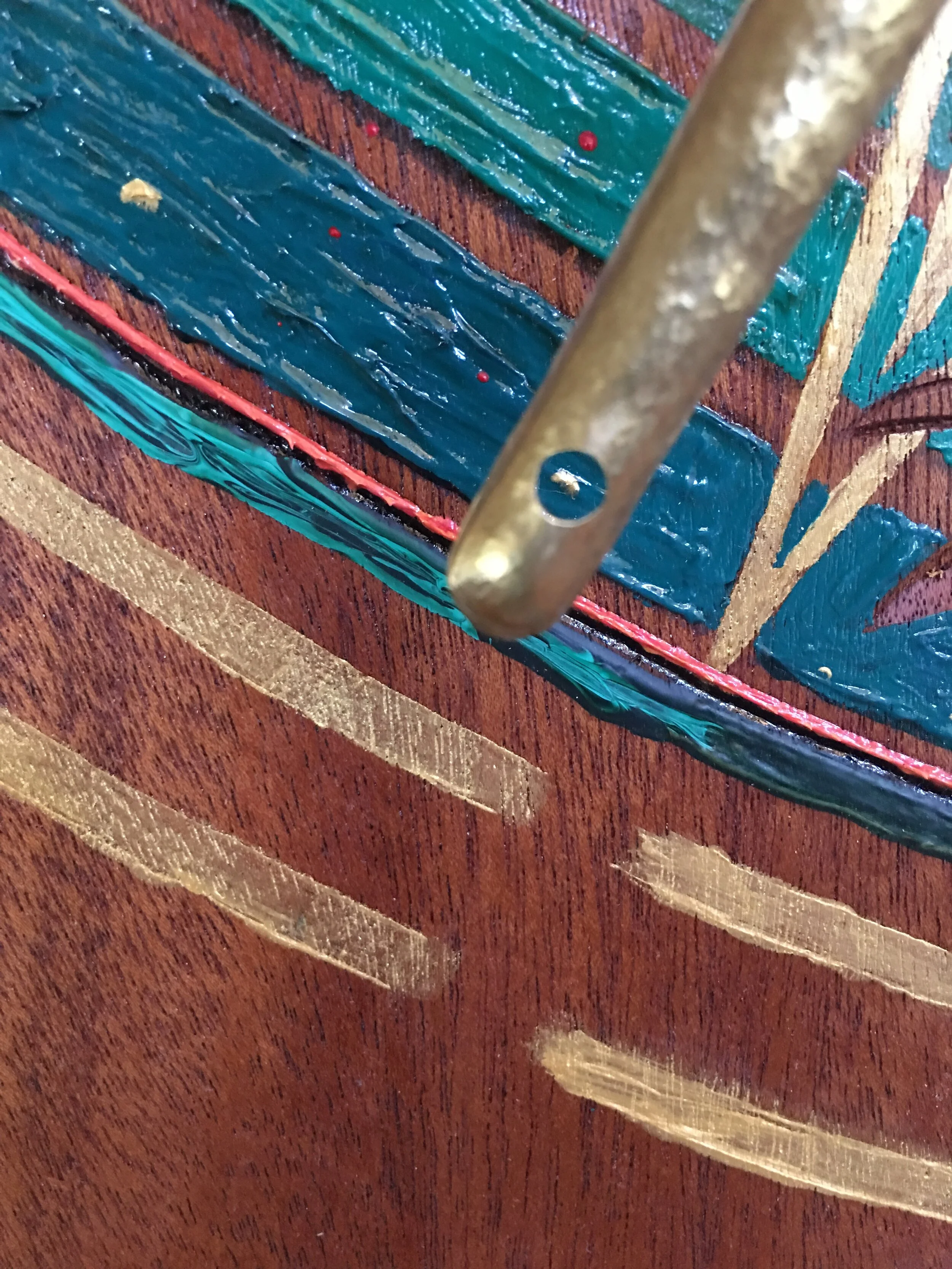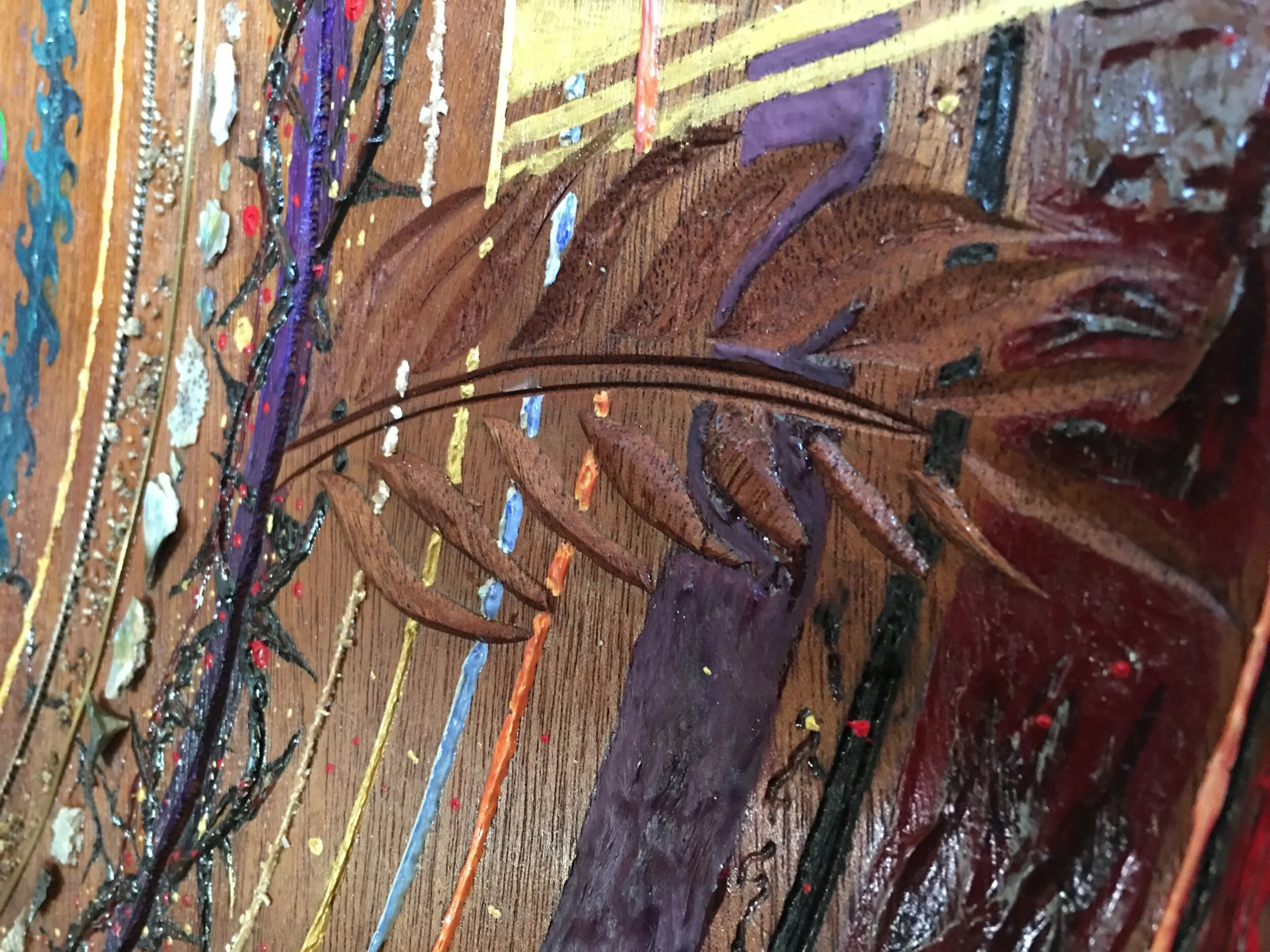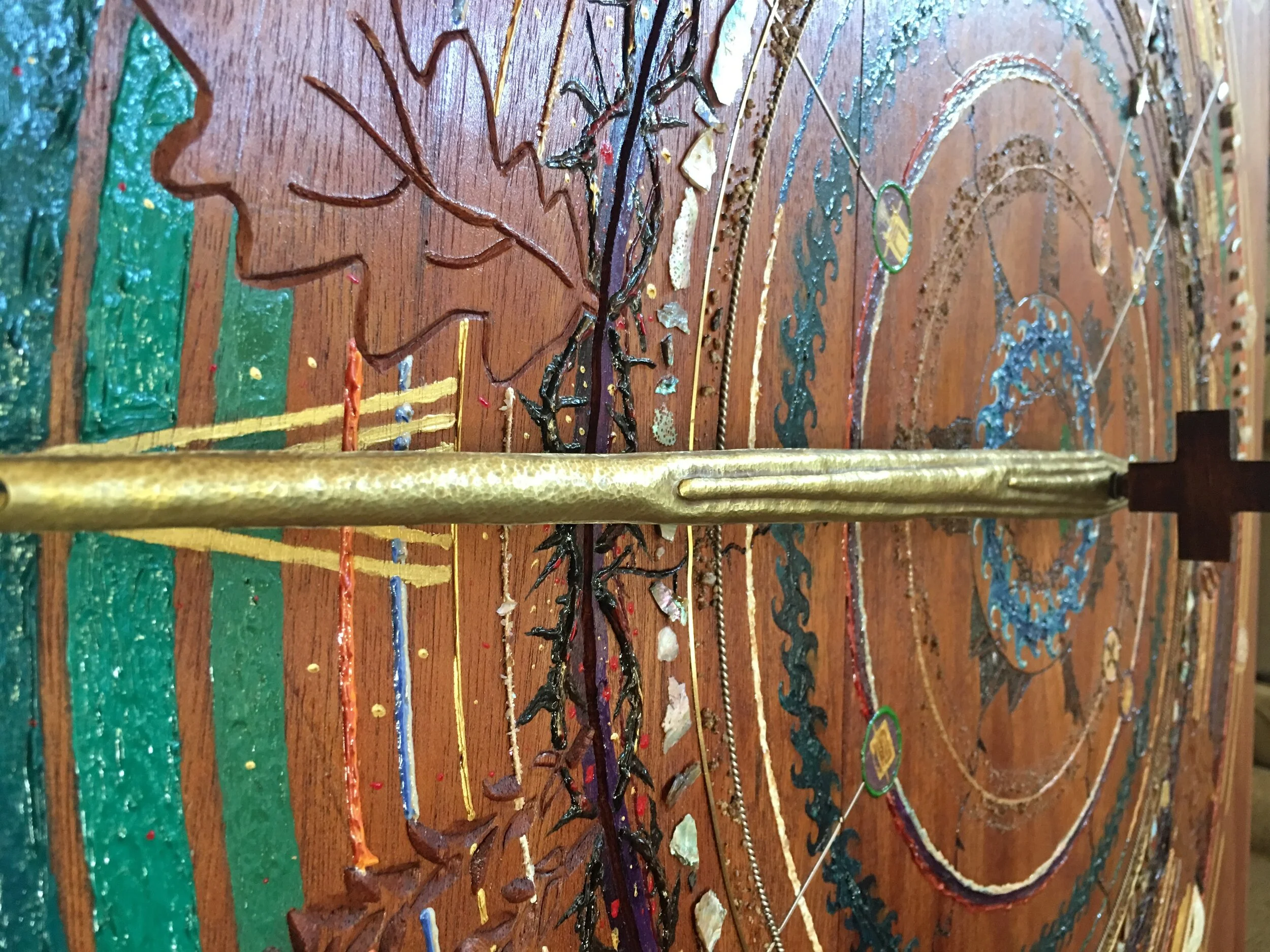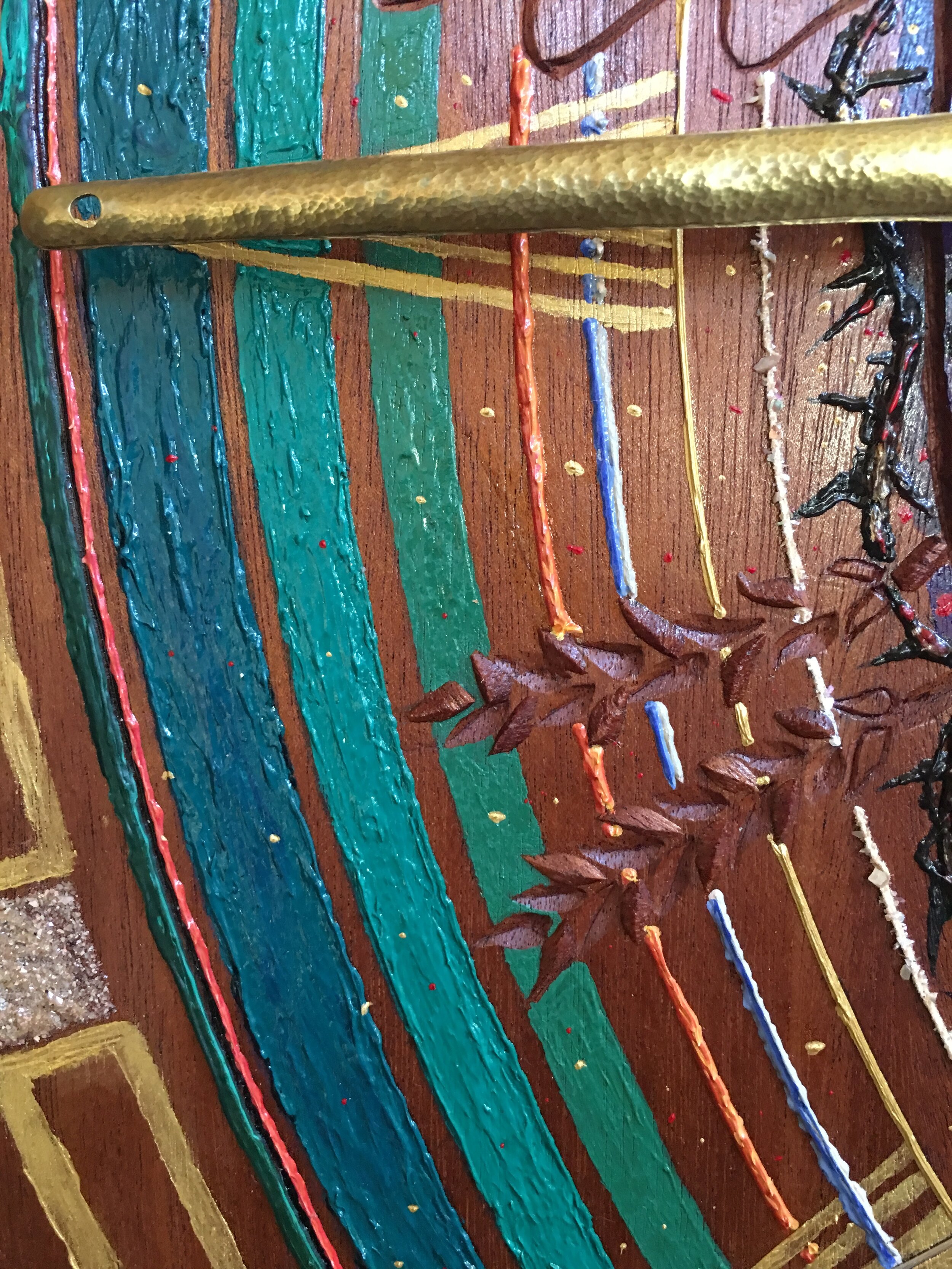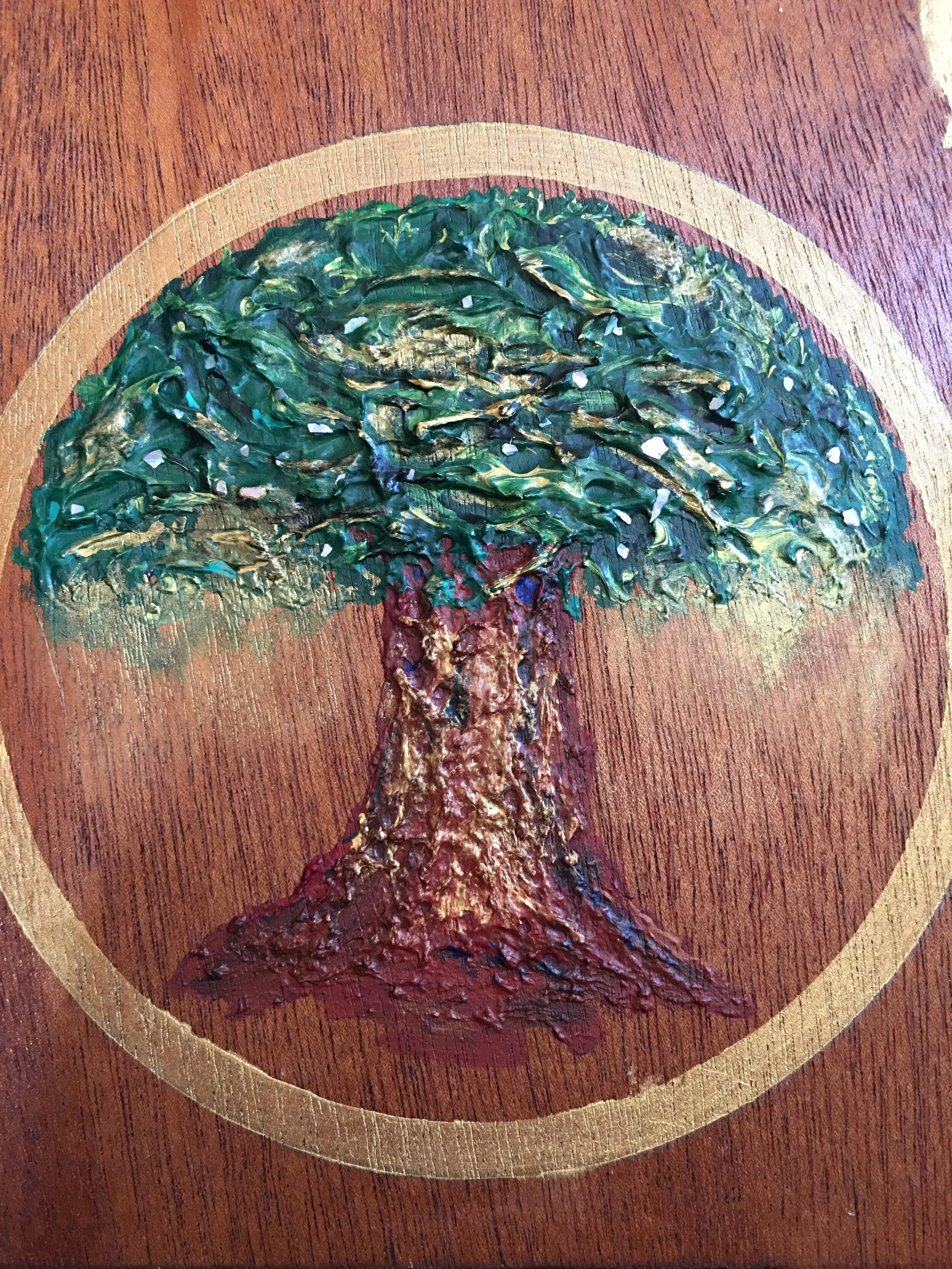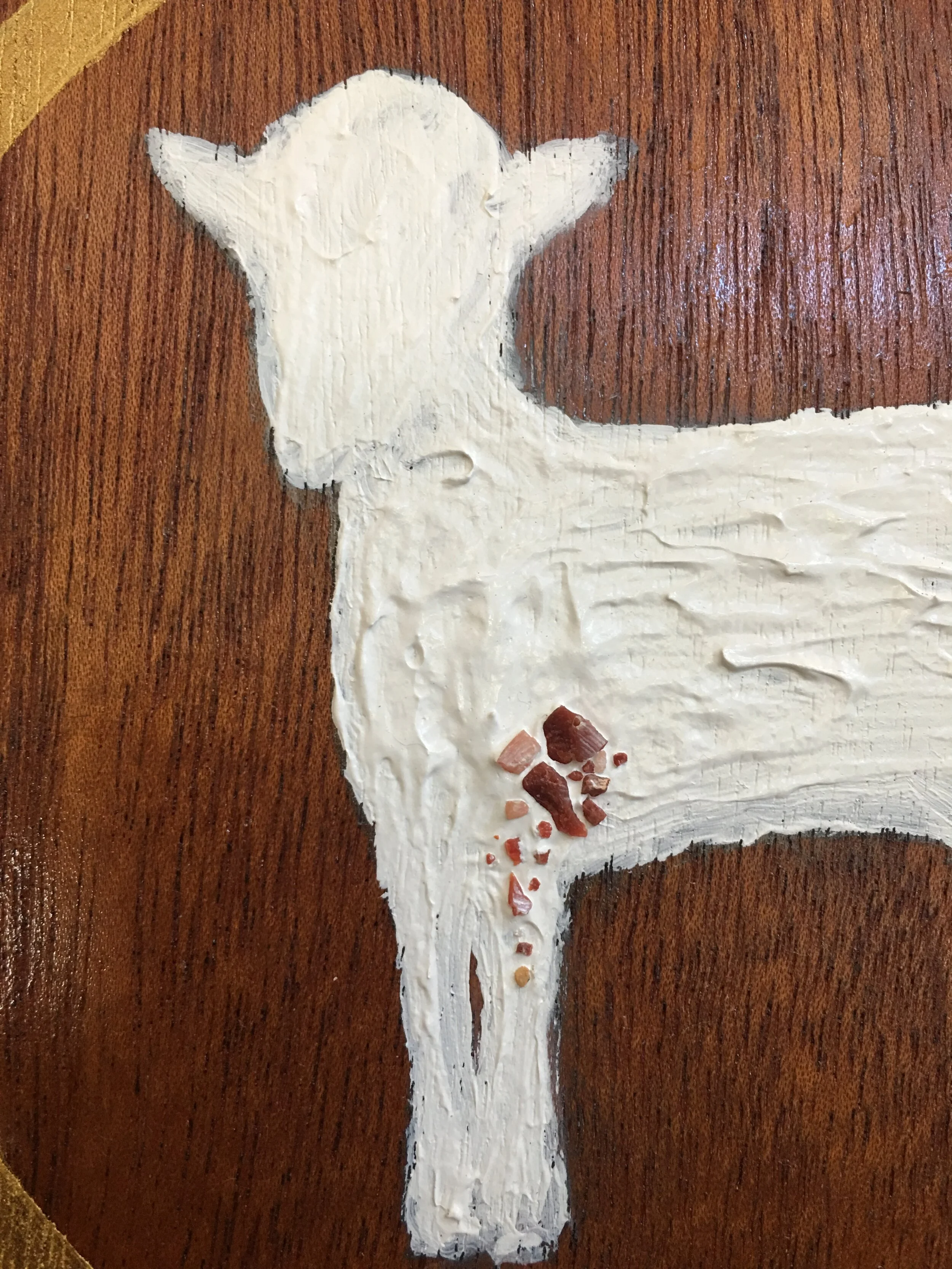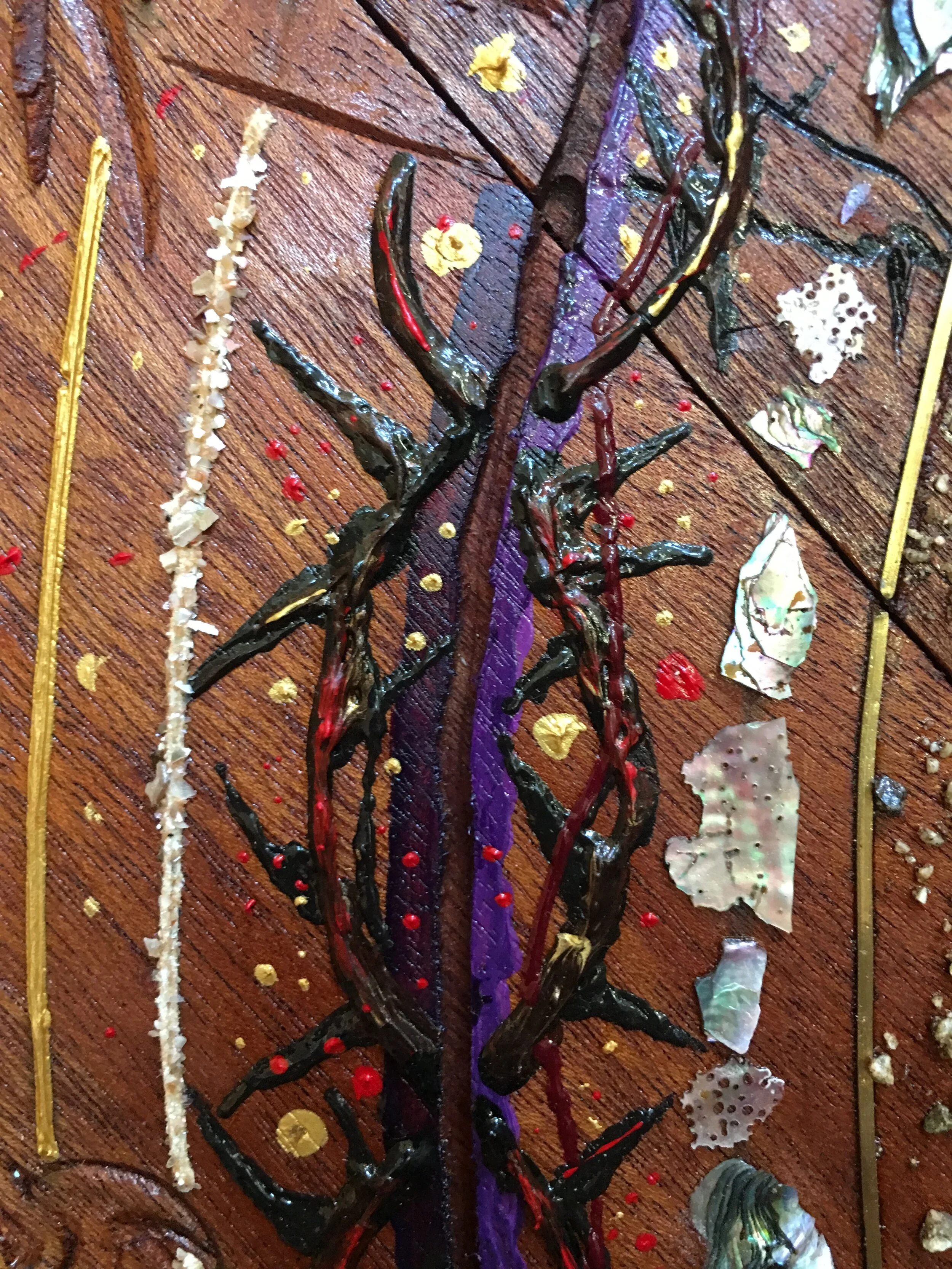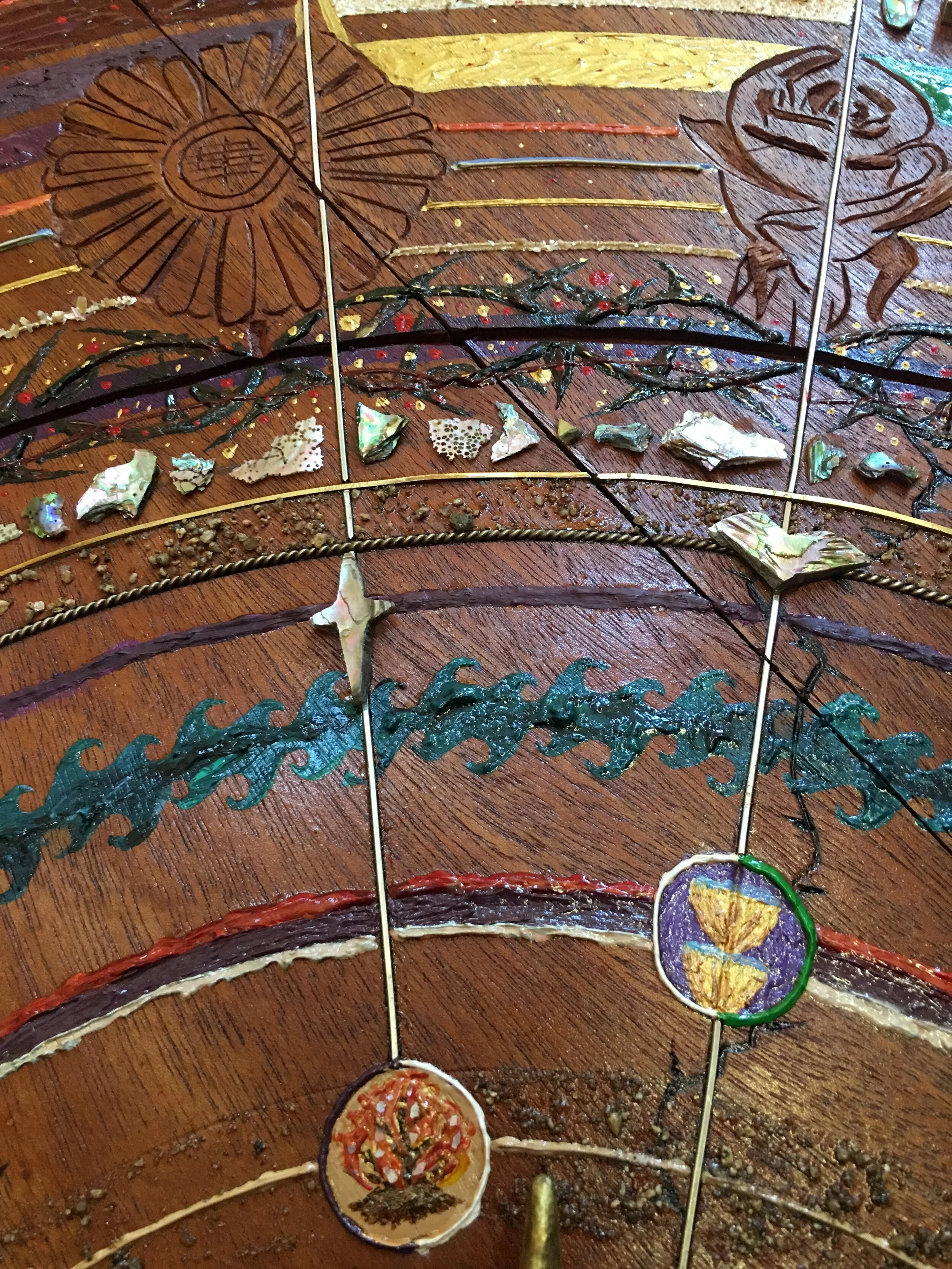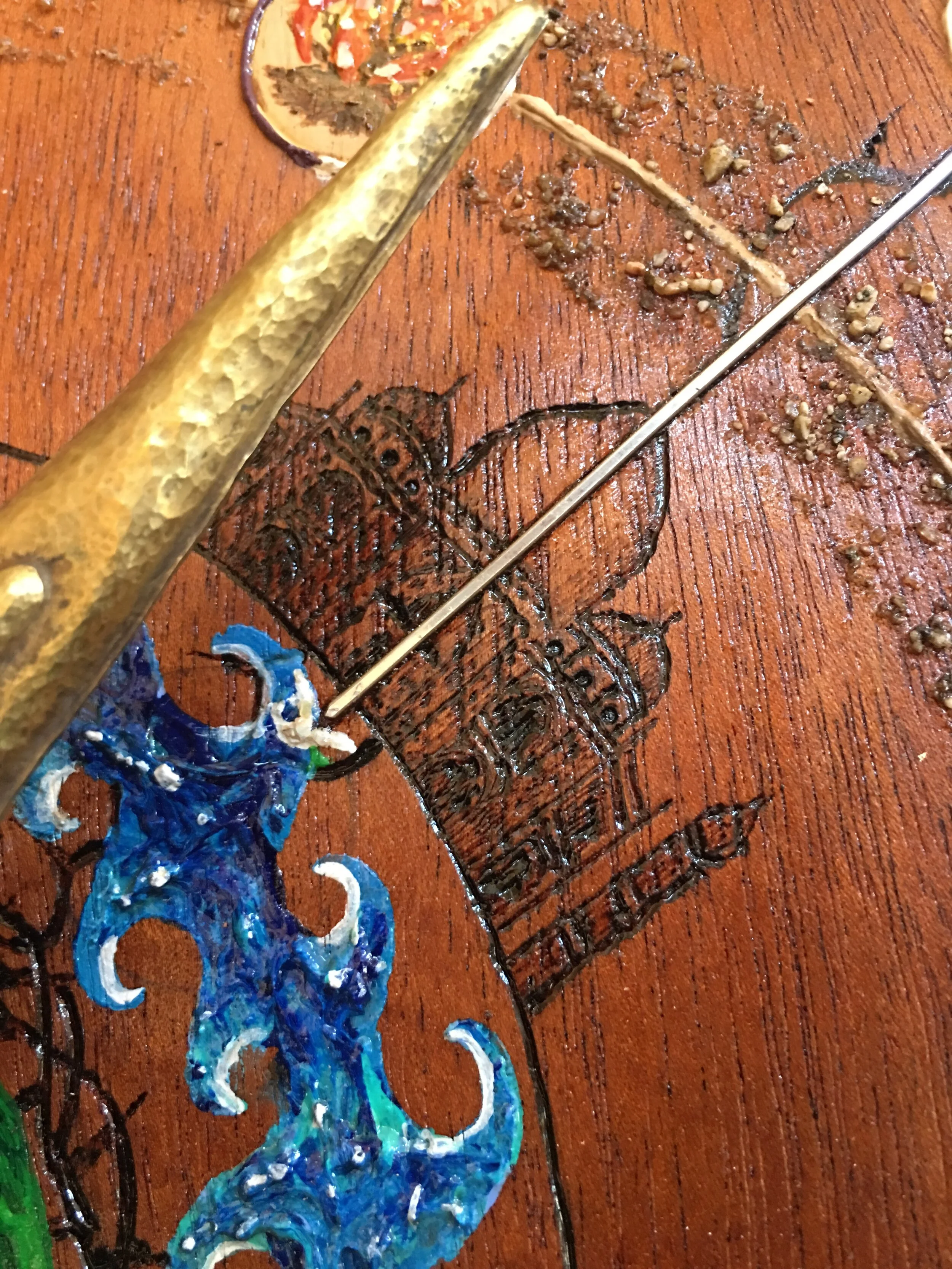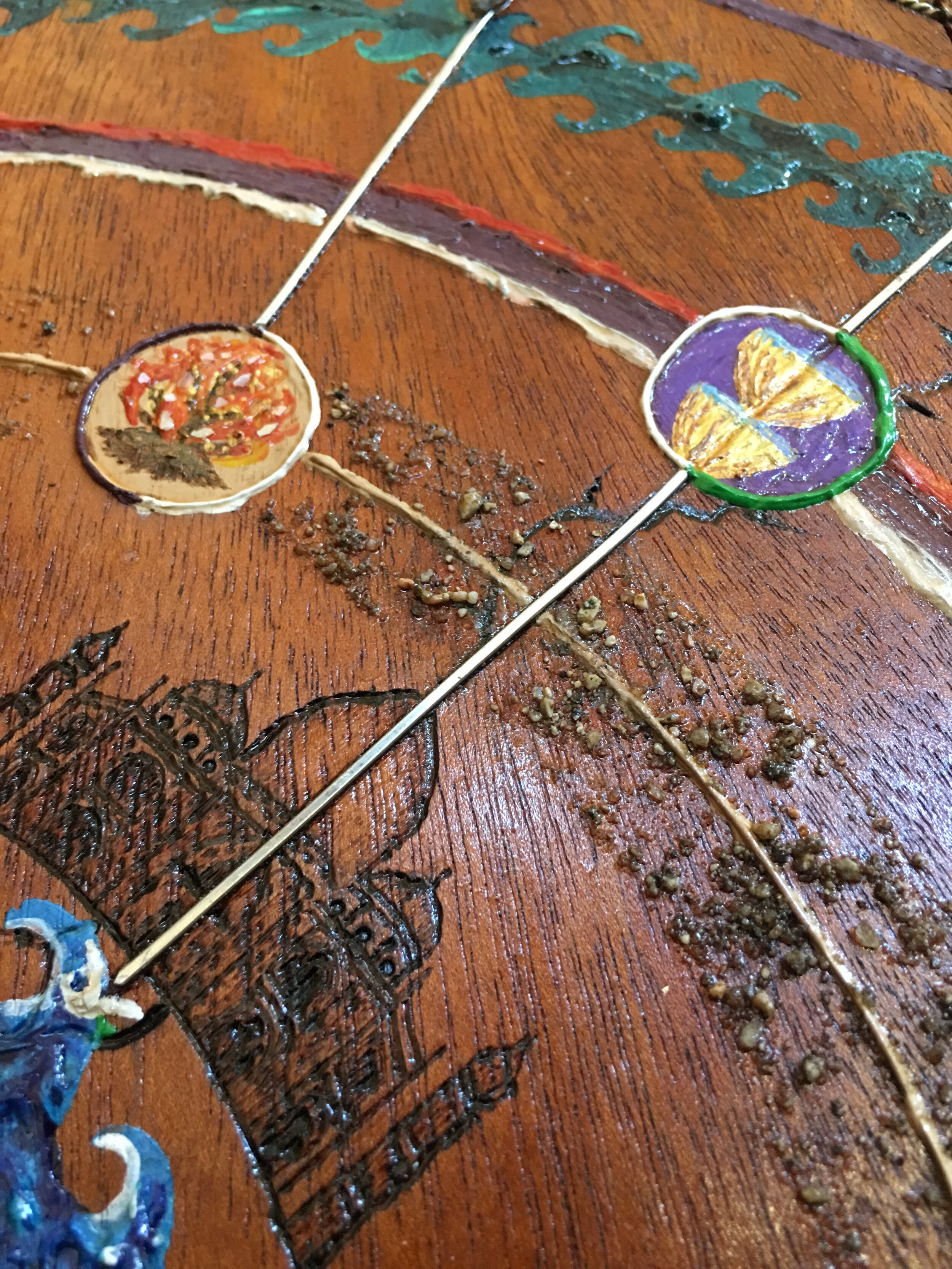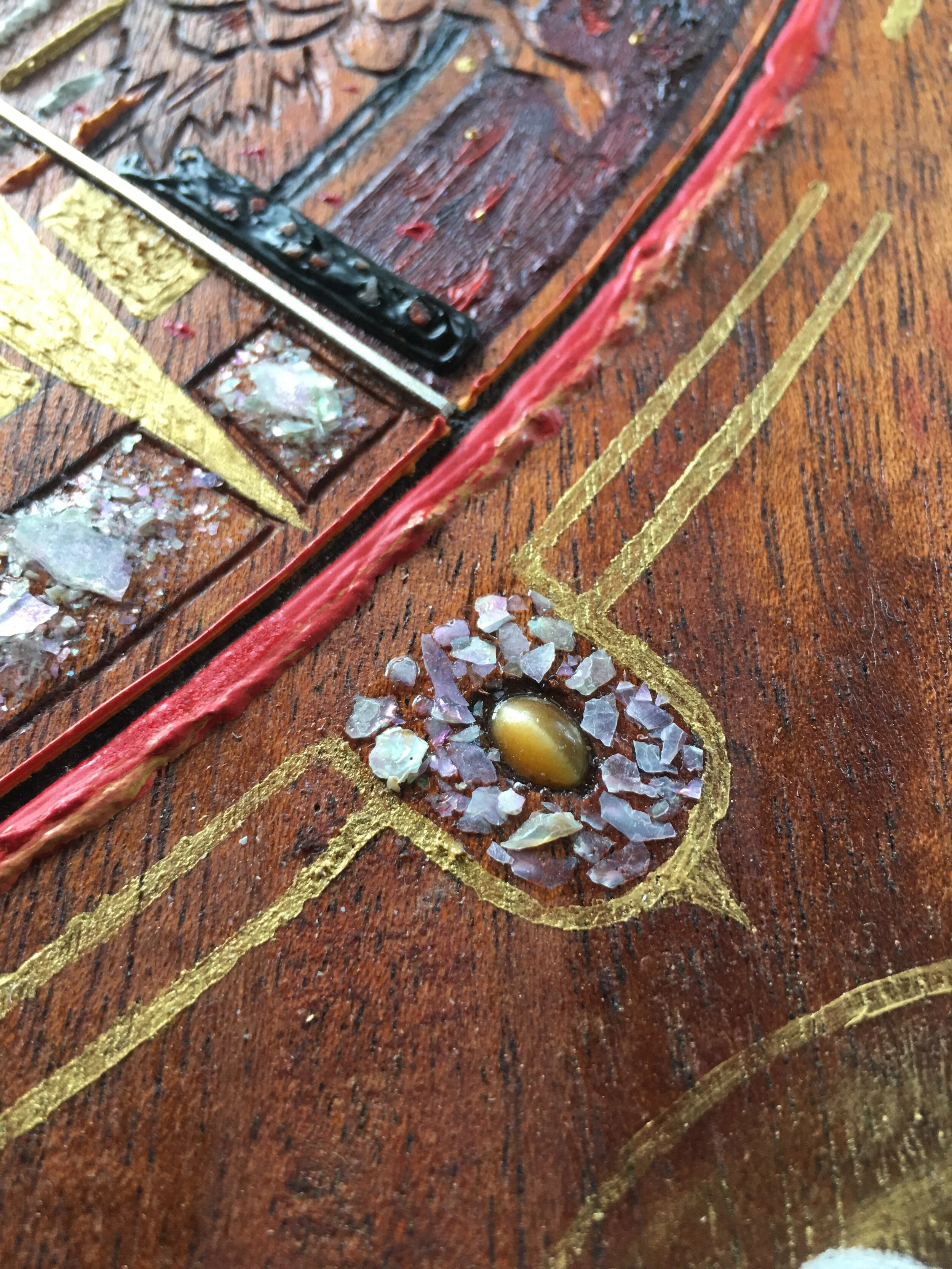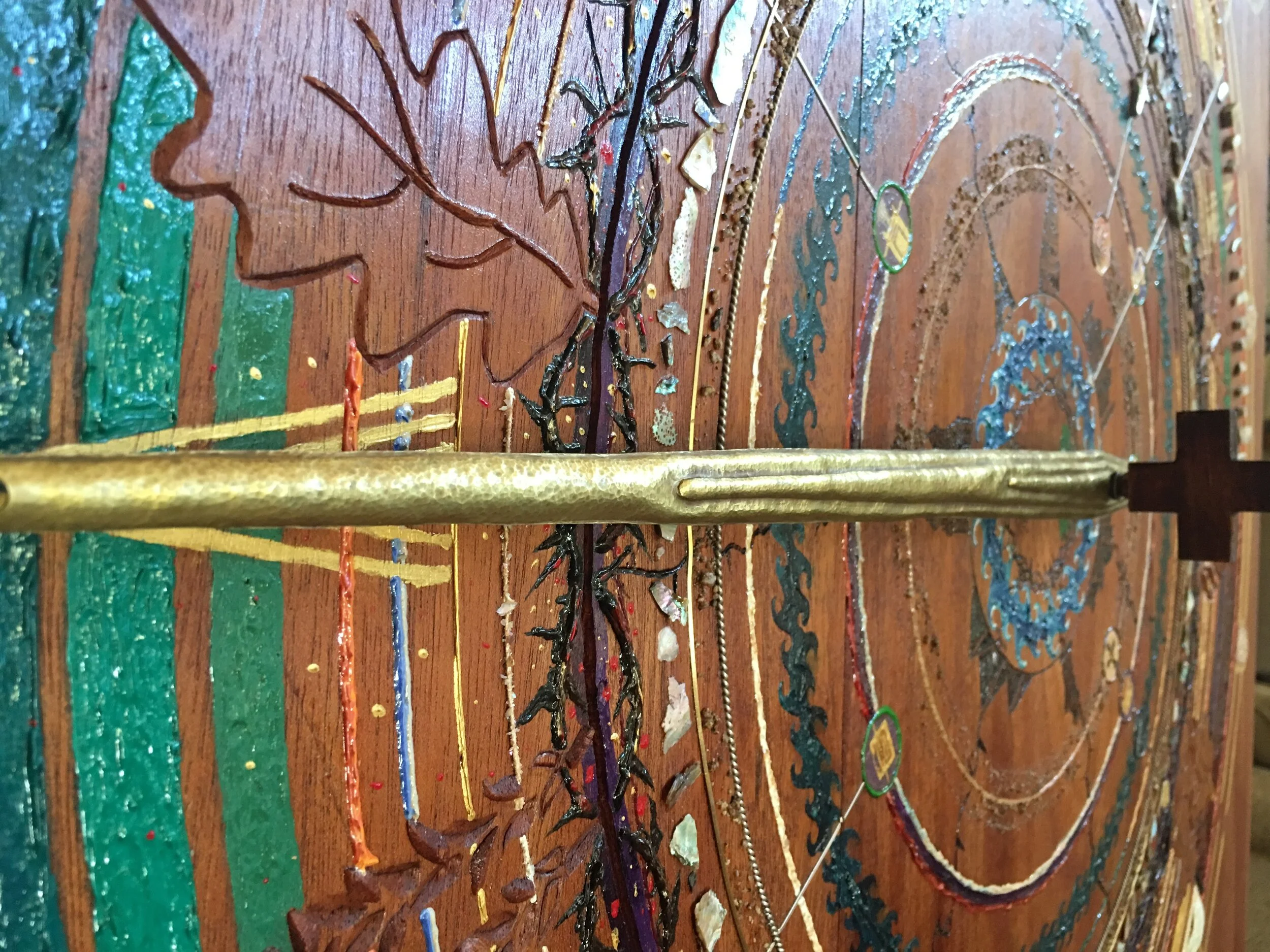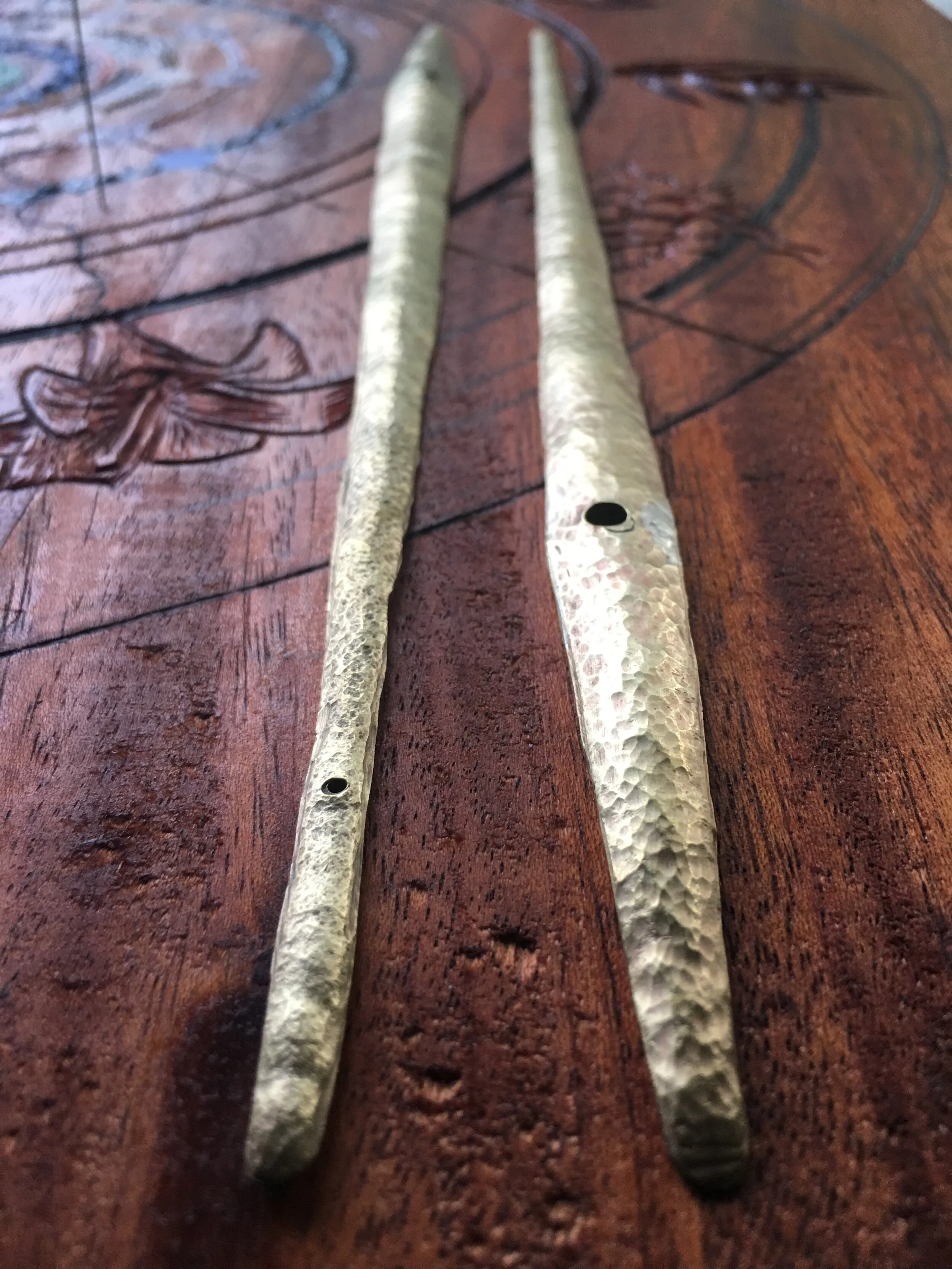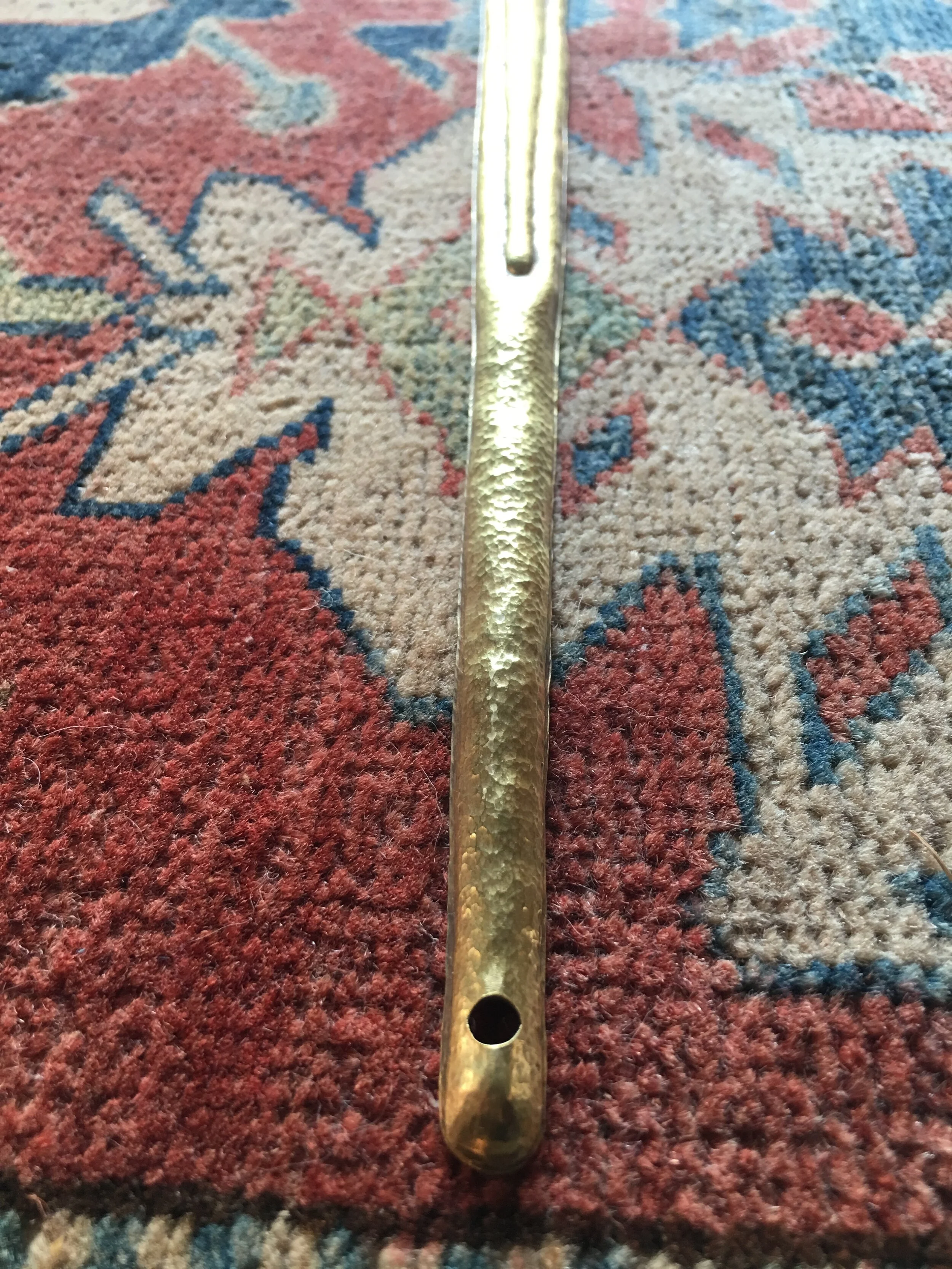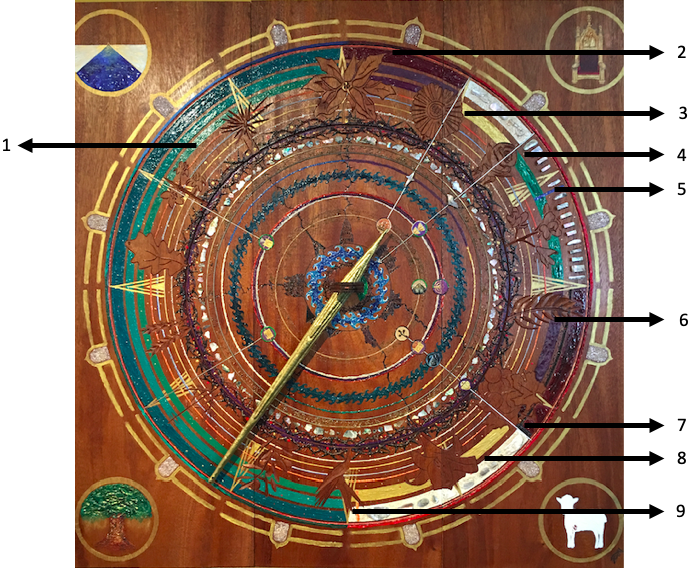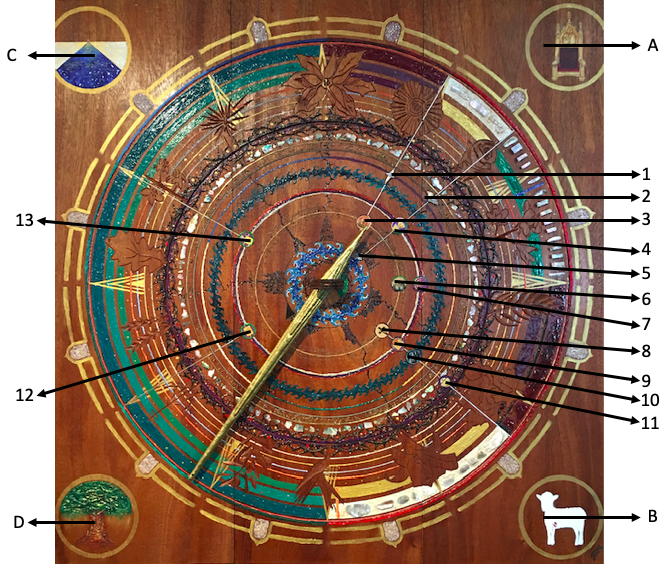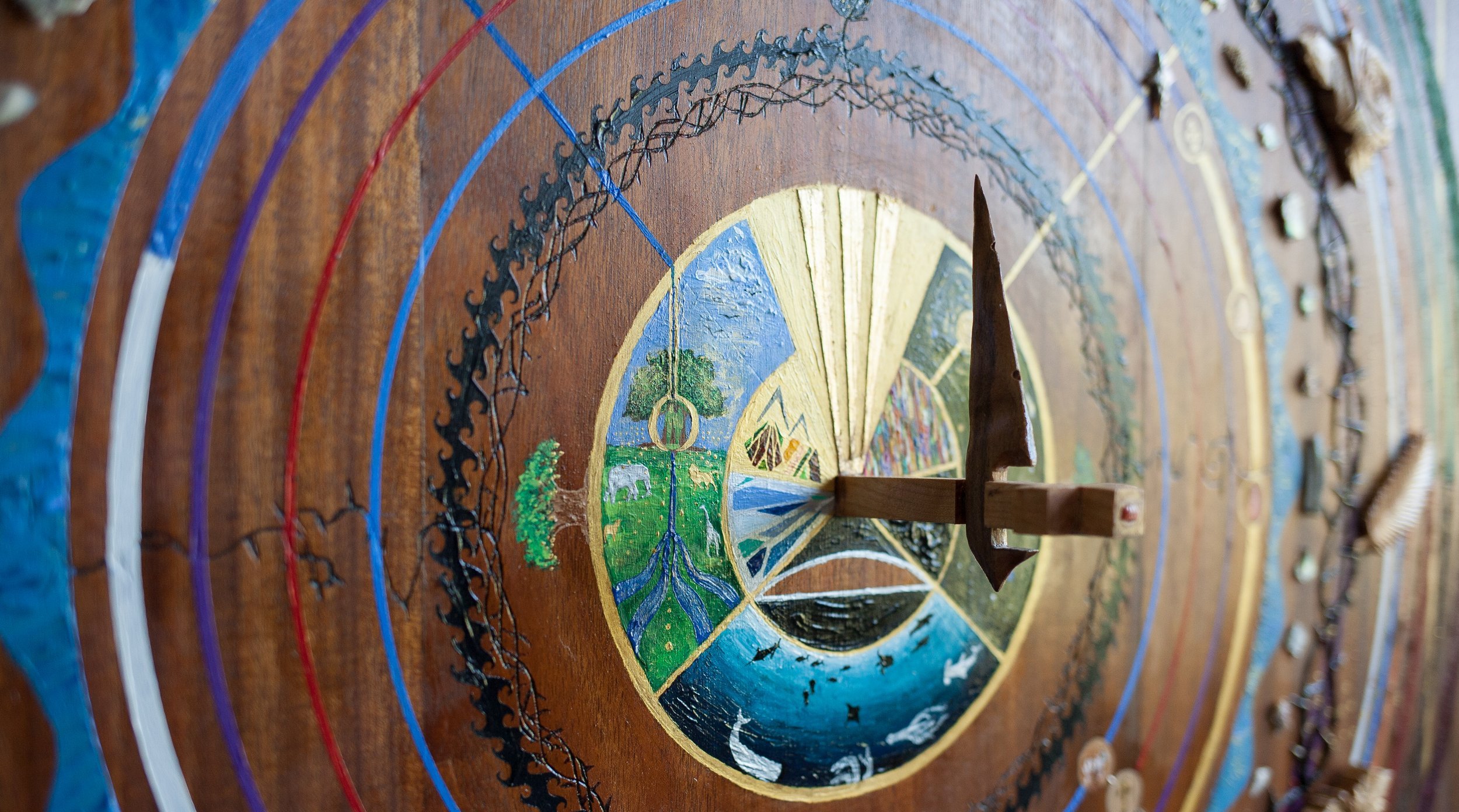
THE TIME THAT MATTERS
Both art and devotional aid, the liturgical clock offers a measure of orientation in the midst of the journey from the city of man to the city of God.
A visual poem of wood, paint, metal, shell, and jewels, the liturgical clock invites you to contemplate the history, moments, and cycles that animate the seasons of faith.
Each clock requires between 150 and 250 hours of fabrication, as I render every element by hand. Their rendering combines carpentry, drawing, painting, wood-burning, carving, etching, inlaying, and staining to feature a wide range of components: wood, oil and acrylic paints, shell, sand, silver, and bronze.
Depending on your preferences, the clocks can be customized to include different kinds of wood as well as metals and precious stones.
The family/individual-sized clock ranges between 20” and 24” square. The covenantal and congregational-sized clock average between 36” and 40” square. All are made from mahogany with appointments of maple, and different kinds of walnut. Some models have also featured more exotic woods like purpleheart.
Incorporating elements of a liturgical calendar and aspects of salvation history, I have designed the liturgical clock to portray intersections of seasonal, Biblical, and Christological experience.
Circles within circles—as wheels within wheels—the liturgical clock reflects the conviction that God and his acts of creation are both ordered and ordering. His presence in this moment, and in history, achieve beauty and balance even if we cannot clearly perceive them amid the chaos and evil that deform our world. His ultimate victory over sin and depends upon the centrality of Christ’s atoning work at Calvary. Thus, the pivot point of the clock’s hand is the cross, which divides that first binary of the garden of Eden: the Tree of Life, and the Tree of the Knowledge of Good and Evil.
The cross stands here asserting what the apostle Peter writes: “He was chosen before the creation of the world, but was revealed in these last times for your sake.”
Covenantal Liturgical Clock

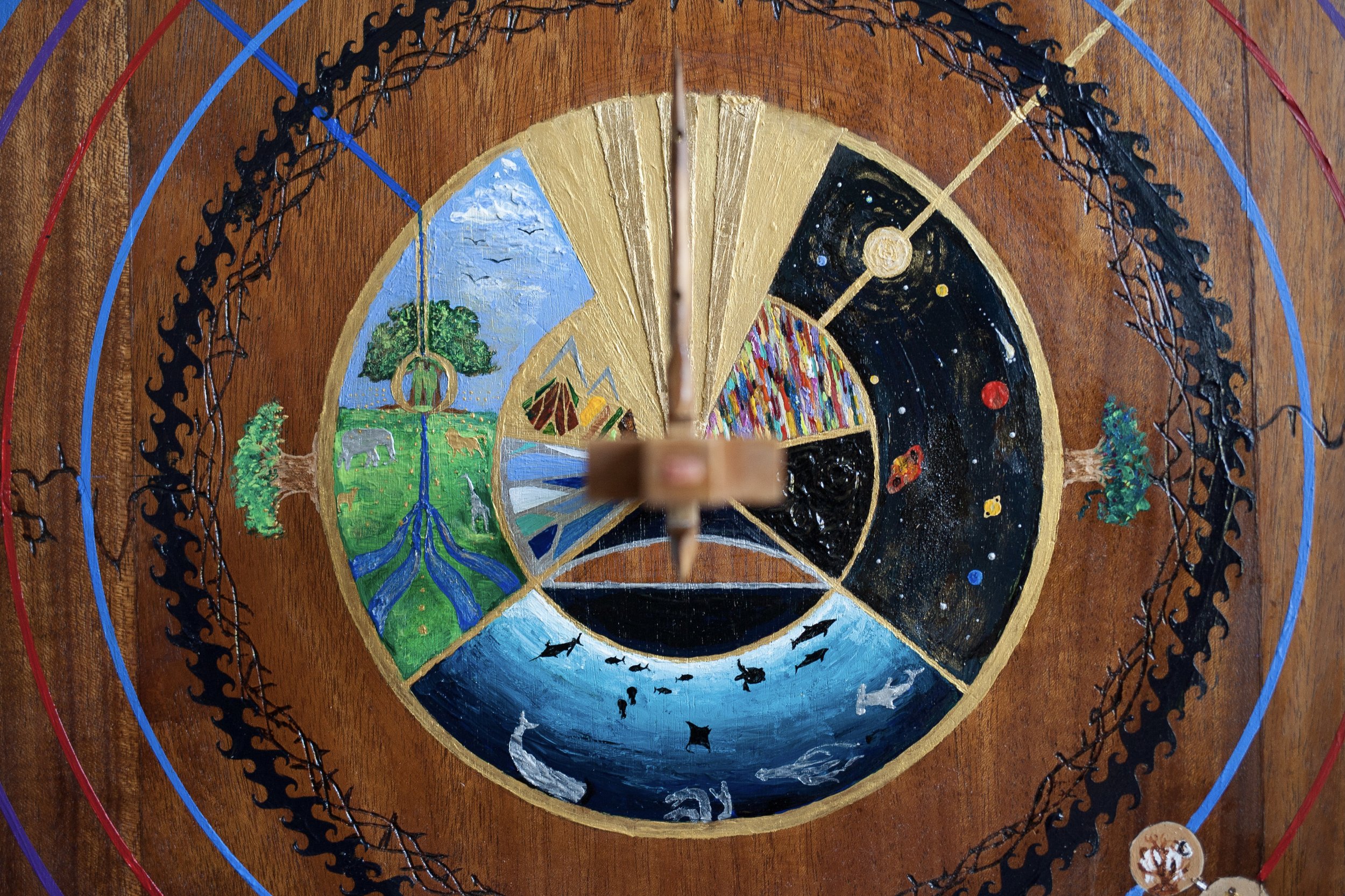

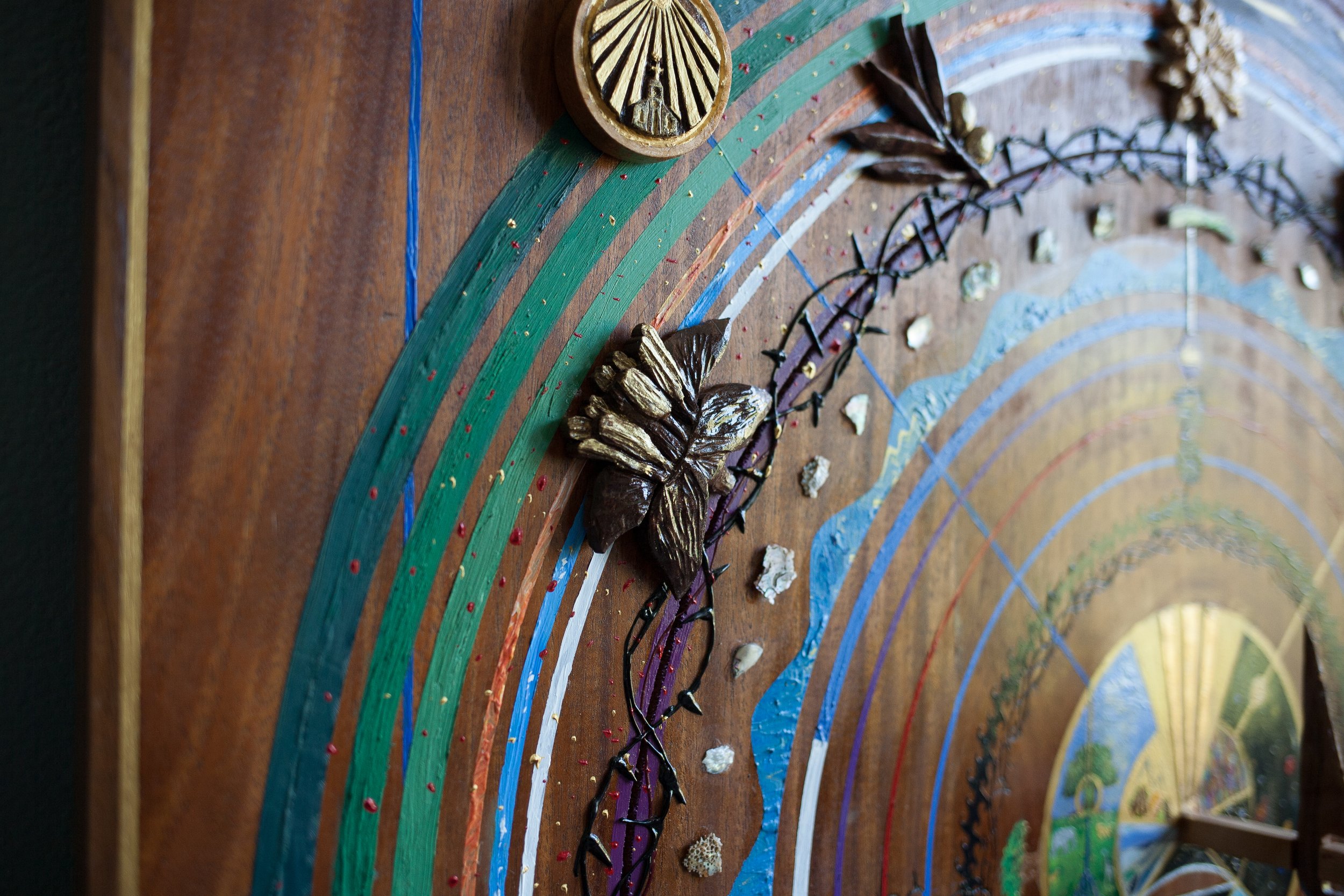
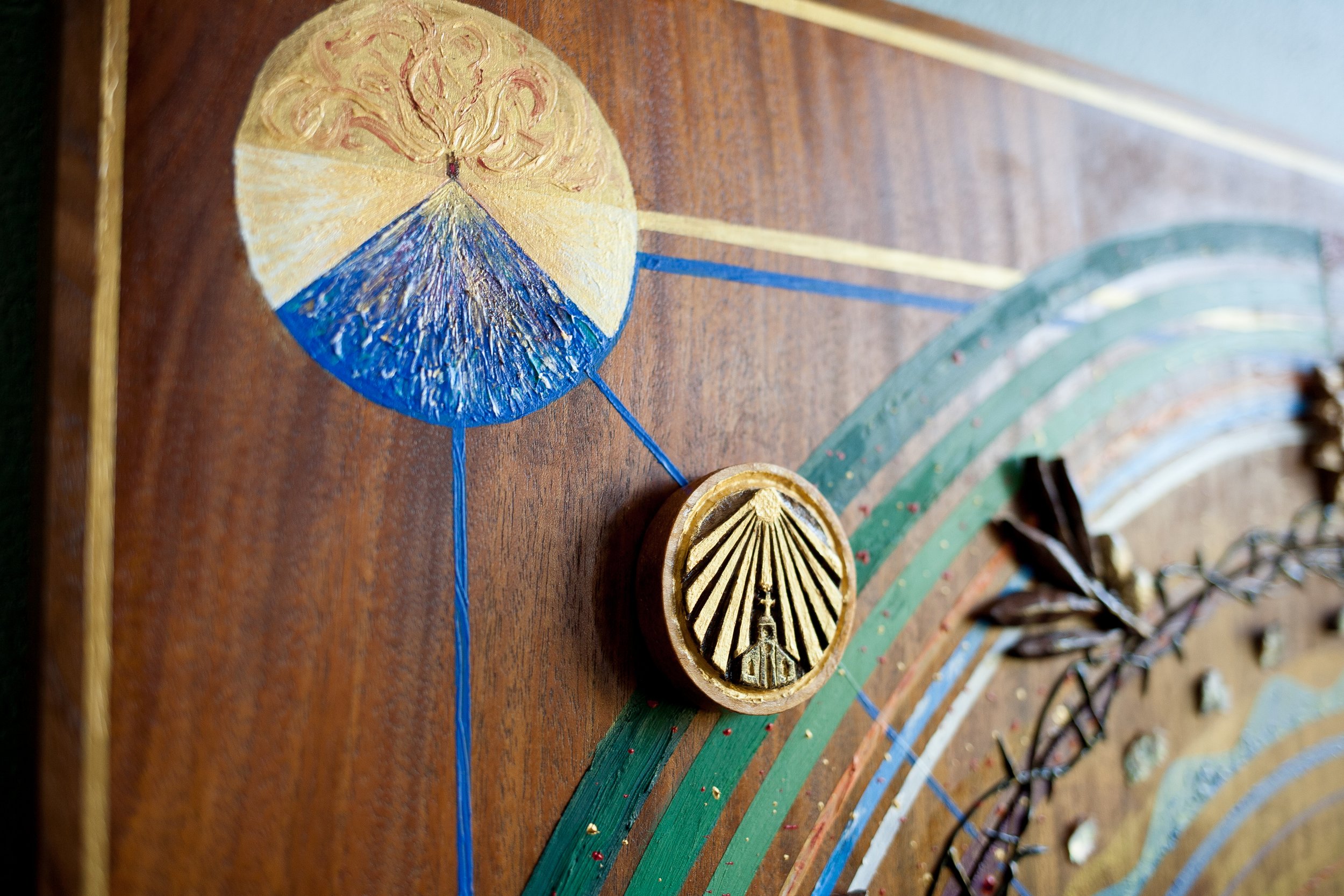


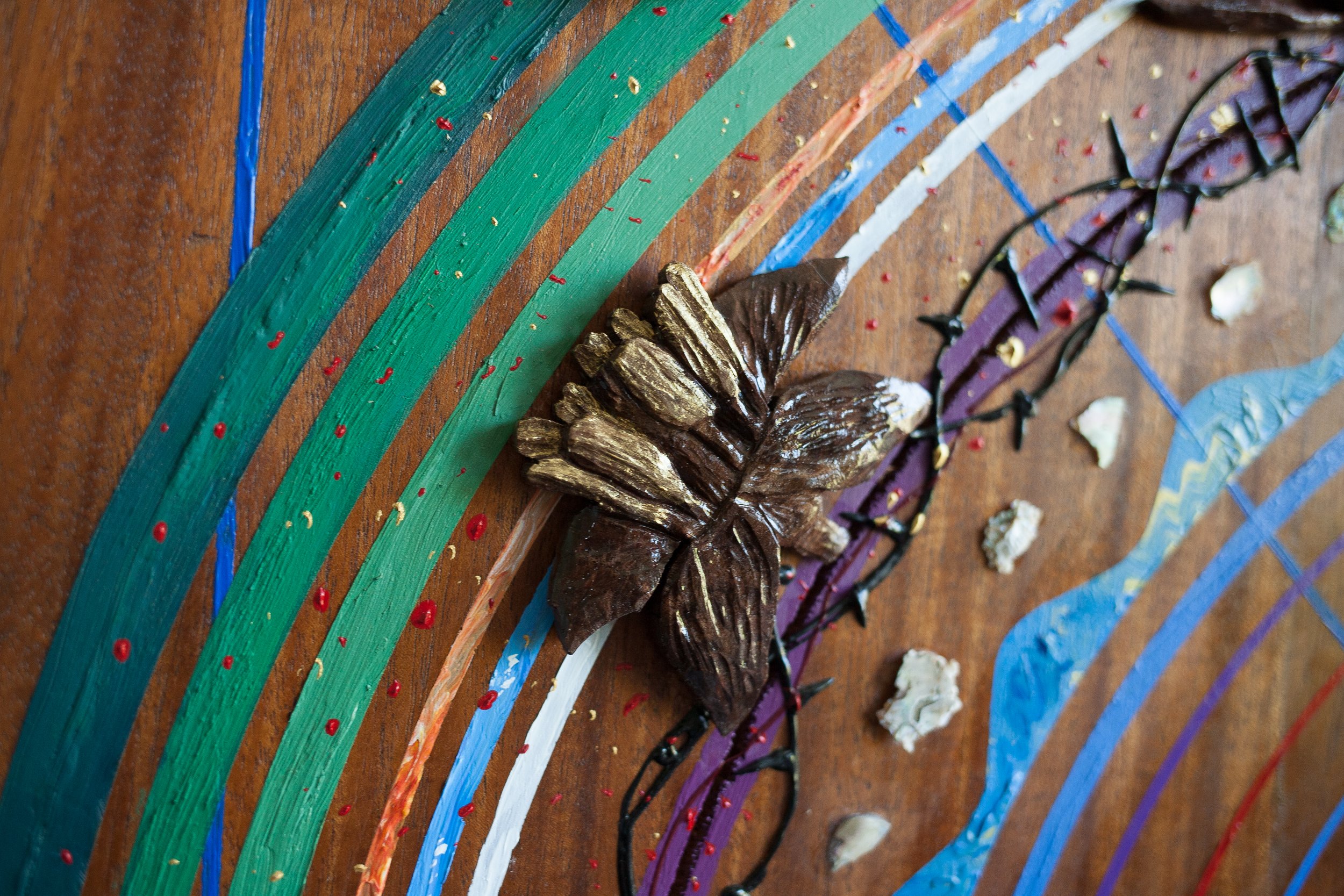
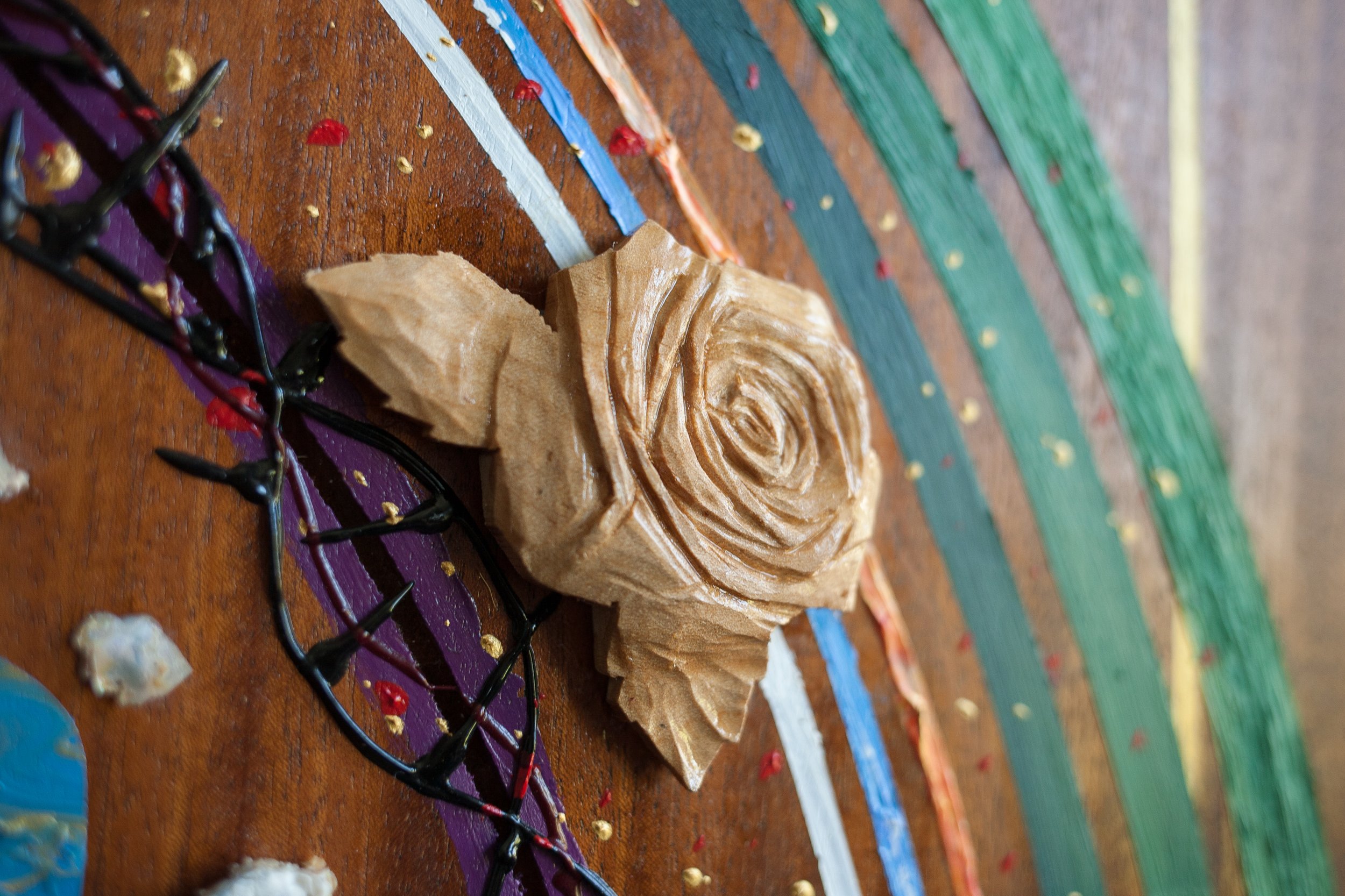
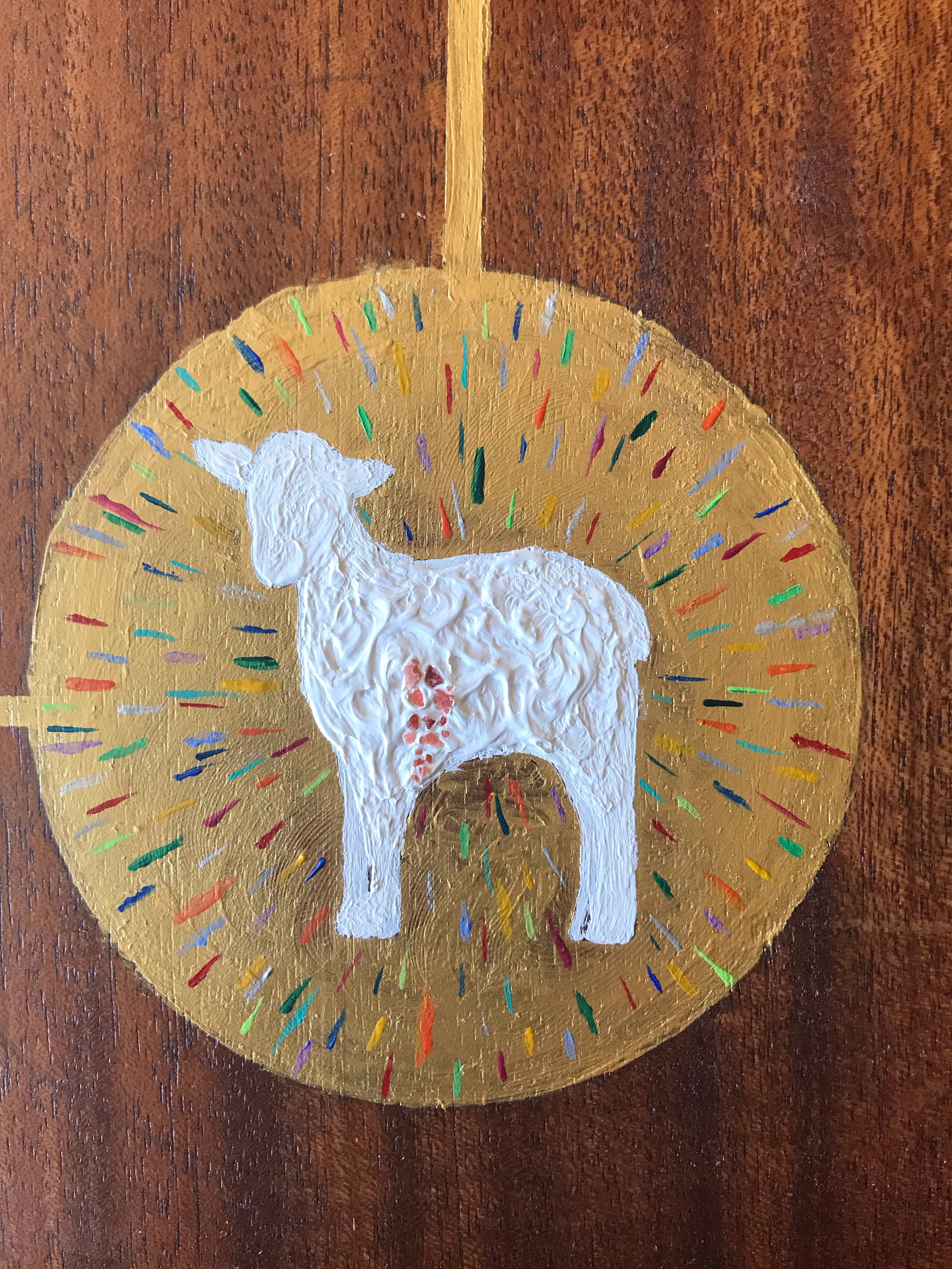
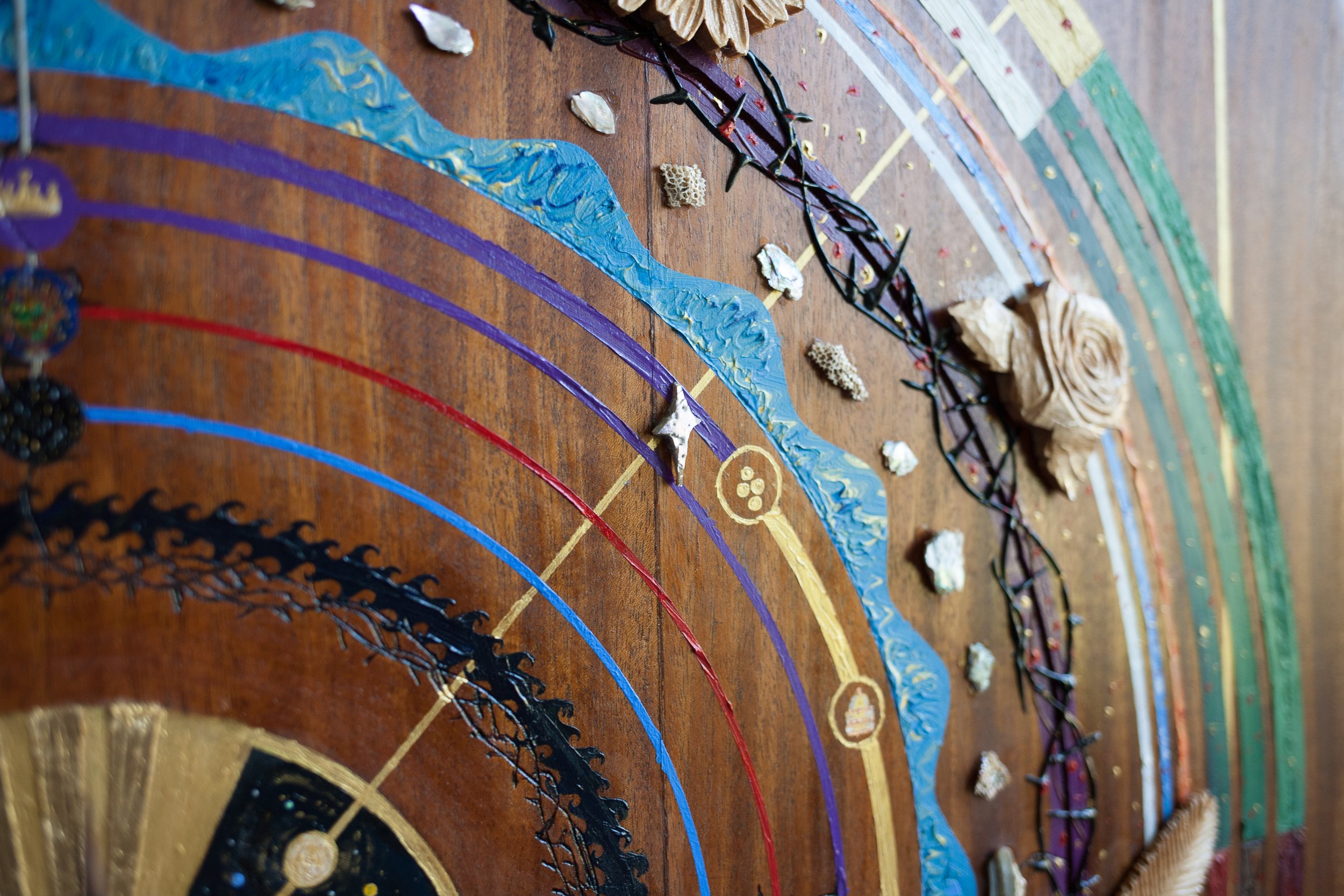

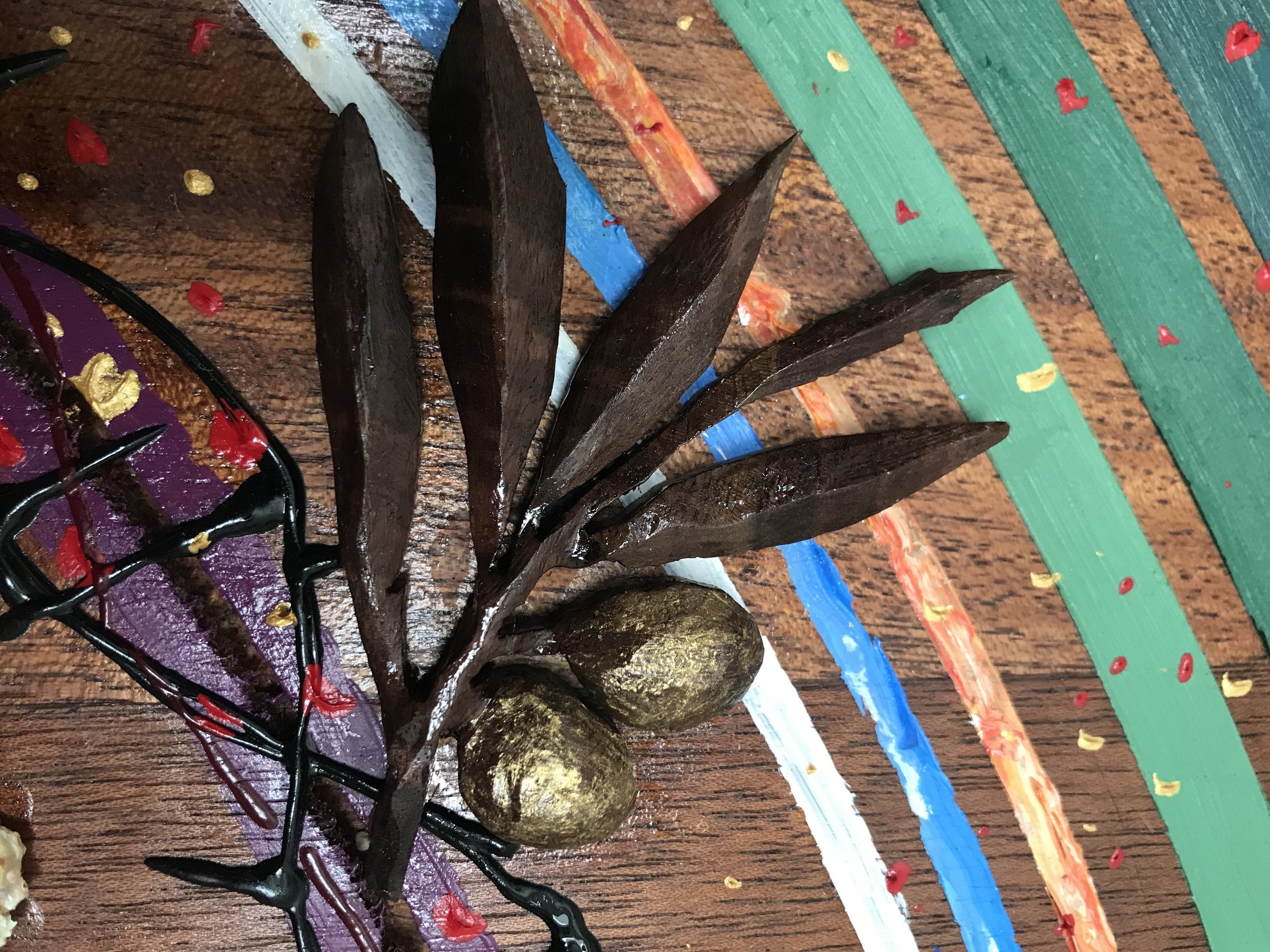
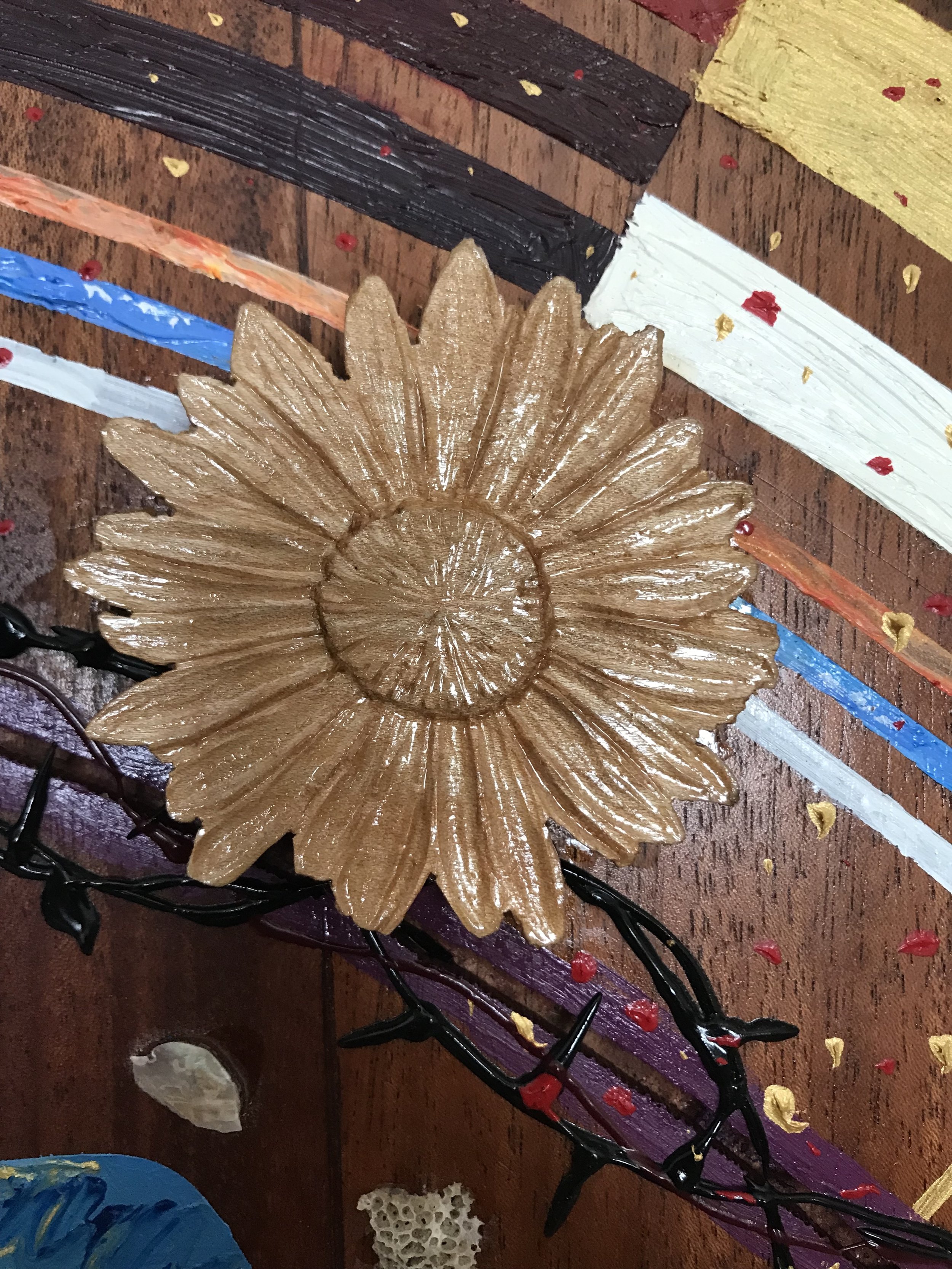


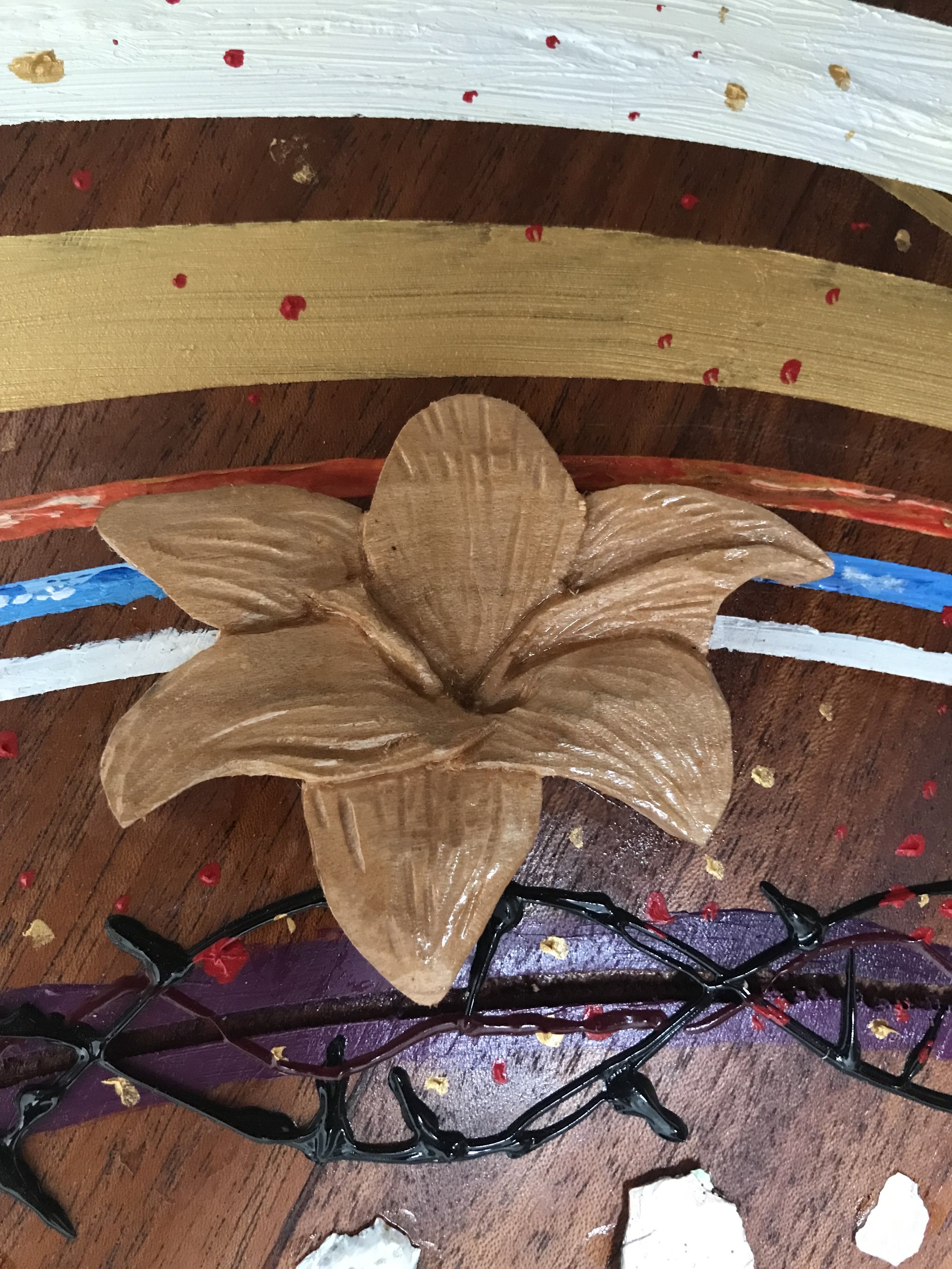
Individual & Family Liturgical Clock
Congregational Liturgical Clock
Cross-Dial Hand
Each clock comes with a unique brass hand made through the process of chasing and repoussé. The hand is meant to be moved by hand, completing one revolution per year as it progresses through the liturgical seasons. Each hand has a small viewing port near the end of the hand and which hovers over the “present” track of the clock. This optical aid represents the way that our perception of history and our place in it should always be viewed in light of Christ’s work on the cross.
As you, your family, and your community turn the hand, the brass will slowly tarnish, and will periodically need to be polished. This aspect of the clock’s “care and feeding” mirrors our own need as communities and individuals to make investments of discipline and care in nourishing our spiritual health.
TELLING TIME WITH A LITURGICAL CLOCK
Firstly, as indicated by the clock hand, is “liturgical time,” identifying the current season of the church year. Beginning from the left (the 6-12 o’clock position), these seasons are Ordinary Time (1), Advent (2), Christmas (3) Epiphany (4), Annunciation (5), Lent (6) Holy Week (7), Easter (8), and Pentecost (9).
Secondly, the clock conveys soteriological time; a sense of the Church’s location in salvation history. This is our journey from the beginning of time to the end of time; from the city of man to the city of God; the New Jerusalem.
Proceeding from the center of the clock and moving to its outside, these are: The Tree of the Knowledge of Good and Evil (on the left), opposite the Tree of Life (1), the Curse in Genesis 3 (2), the Flood (3), The City of Man (4)[1], Slavery in Egypt and the Exodus (5), the Tabernacle and the Prophets (6)[2], Jonah and the Whale (7), the Incarnation(8)[3], Christ’s Baptism (9), the Temptation in the Desert (10), the Transfiguration (11), The Blood of Christ (12), the Crucifixion (13), the Resurrection (14), The Great Commission (15), The Ascension (16), Pentecost (17), the Present (18), The Judgement (19), Death (20), The Foundations of New Jerusalem (21)[4], the 12 Gates (for the 12 Tribes of Israel) of the City of God (22).
Emerging from the crown of thorns and carved into the wood I have included fourteen floral/botanical images. Taken from a combination of Scripture, classical art, and hagiography, these images on the right hand side reflect the life and character of Christ. These begin with the poinsettia at the 12 o’clock position and, moving clockwise, include the daisy, rose, mustard flower, palm branch, grapes and vine, Easter lily, and bird of paradise. The left half of the clock features images that reflect the character and life of faith and the church. Following the bird of paradise are: an olive branch, hyssop, wheat, an oak leaf, boswellia sacra (the tree from which frankincense is made), and the needle-like leaves of the cedar of Lebanon.
[1] The City of Man features a clockwise presentation of the Tower of Babel, the Taj Mahal, The Sydney Opera House, The Statue of Liberty, the Pyramids at Giza, St. Basil’s in Red Square, and the Eiffel Tower.
[2] Purple for the Tabernacle and temple veils, with the pillars of cloud and fire on either side. These circles also suggest the “wheels within wheels” from the beginning of Ezekiel’s prophetic vision.
[3] Purple for royalty, Gold for Christ the King, Green for Christ as Creator, White for Advent and Christ Resurrected, and Blue for baptism (also for Mary)
[4] These foundations are jasper, sapphire, agate, emerald, onyx, ruby, chrysolite, beryl, topaz, turquoise, jacinth, and amethyst.
The clock fuses these representations of salvation history and the liturgical year through a constellation of images and symbols that direct attention to the revelations of Christ as the long expected and promised Messiah. These images are aligned by silver rays between the cross and different liturgical seasons which are, themselves, oriented around the celebration of important events in the life and ministry of Christ.
The Nativity Star (1), The Holy Spirit as the Dove at Christ’s Baptism (2), the Burning Bush(3), The Bronze Basin (4), Noah’s Dove (5), The Ten Commandments/ Mt. Sinai (6), The Minora (7), the Bronze serpent on the cross (8), the Altar of Sacrifice (9), Jonah’s Whale (10), the Lord’s Supper (11), the Ark of the Covenant (12), the Altar of incense (13). In the four corners of the New Jerusalem are the Throne of God (A), the Lamb of God (B), the River of God, proceeding from the Throne of God (C), and the Tree of Life (D).



